Basil is more than just a kitchen herb. It's a plant family with over 30 unique types, each with its own flavor, shape, and color. Some basil leaves are small and spicy. Others are large, sweet, and perfect for pesto. There are even purple varieties that look as bold as they taste.
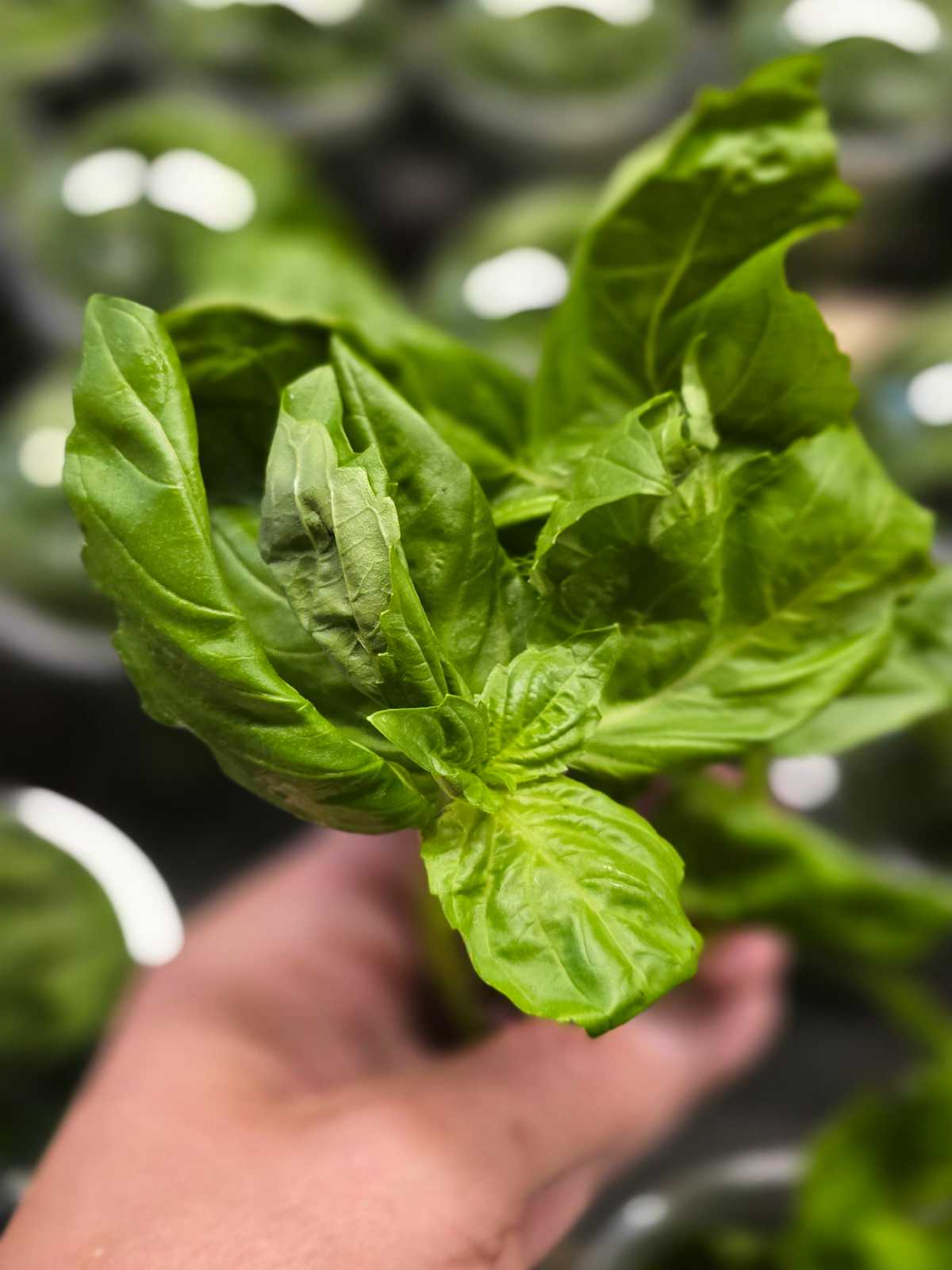
In this A-to-Z guide, you'll find a wide range of basil types-each type of basil shown with a photo and explained in simple terms. You'll learn how each variety looks, what it tastes like, how it's commonly used, and what makes it stand out.
⬇️ Table of Contents
- 1. African Blue Basil
- 2. Anise Basil
- 3. Blue Spice Basil
- 4. Boxwood Basil
- 5. Cardinal Basil
- 6. Christmas Basil
- 7. Cinnamon Basil
- 8. Clove Basil
- 9. Dark Opal Basil
- 10. Fino Verde Basil
- 11. Genovese Basil
- 12. Greek Basil
- 13. Greek Columnar Basil
- 14. Green Ruffles Basil
- 15. Holy Basil (Tulsi)
- 16. Hoary Basil
- 17. Italian Basil
- 18. Italian Large Leaf Basil
- 19. Lemon Basil
- 20. Lime Basil
- 21. Lettuce Basil
- 22. Bolloso Napoletano Basil
- 23. Opal Basil
- 24. Persian Basil
- 25. Purple Basil
- 26. Purple Ruffles Basil
- 27. Red Rubin Basil
- 28. Spice Basil
- 29. Spicy Bush Globe Basil
- 30. Sweet Basil
- 31. Thai Sweet Basil
1. African Blue Basil
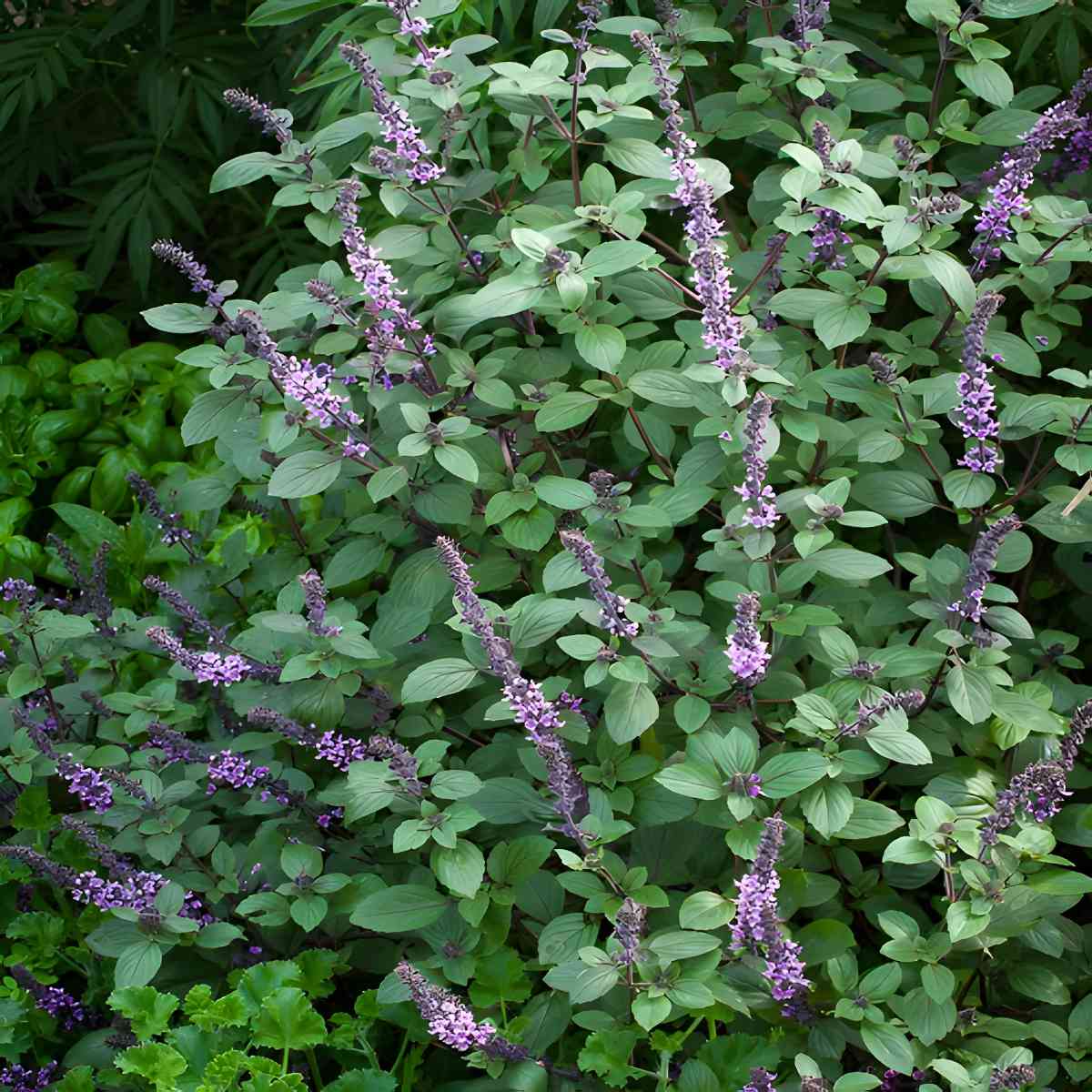
African blue basil (Ocimum kilimandscharicum × basilicum 'Dark Opal') was developed in 1983 by Peter Borchard in Athens, Ohio. This hybrid, combining camphor and dark opal basil, is a sterile perennial that propagates only through cuttings.
Appearance & Taste
This basil transitions from purple in youth to green at maturity while retaining purple veins. Its leaves emit a strong camphor scent, mellowing when cooked to enrich dishes with a robust, slightly minty flavor.
Uses/Culinary
- Pesto: Ideal for making pesto due to its intense aroma and flavor.
- Soups and Salads: Enhances the taste of soups and salads.
- Meat Dishes: Complements meat dishes well, especially when ingredients like tomatoes and green beans are involved.
Unique Characteristics
- Sterility: Although sterile, it blooms profusely, making it an exceptional pollinator attractor.
- Ecosystem Benefits: Its ability to attract bees enhances garden biodiversity, contributing to a healthier garden ecosystem.
- Culinary Asset: Provides a unique flavor and aroma that enhances a variety of dishes.
2. Anise Basil
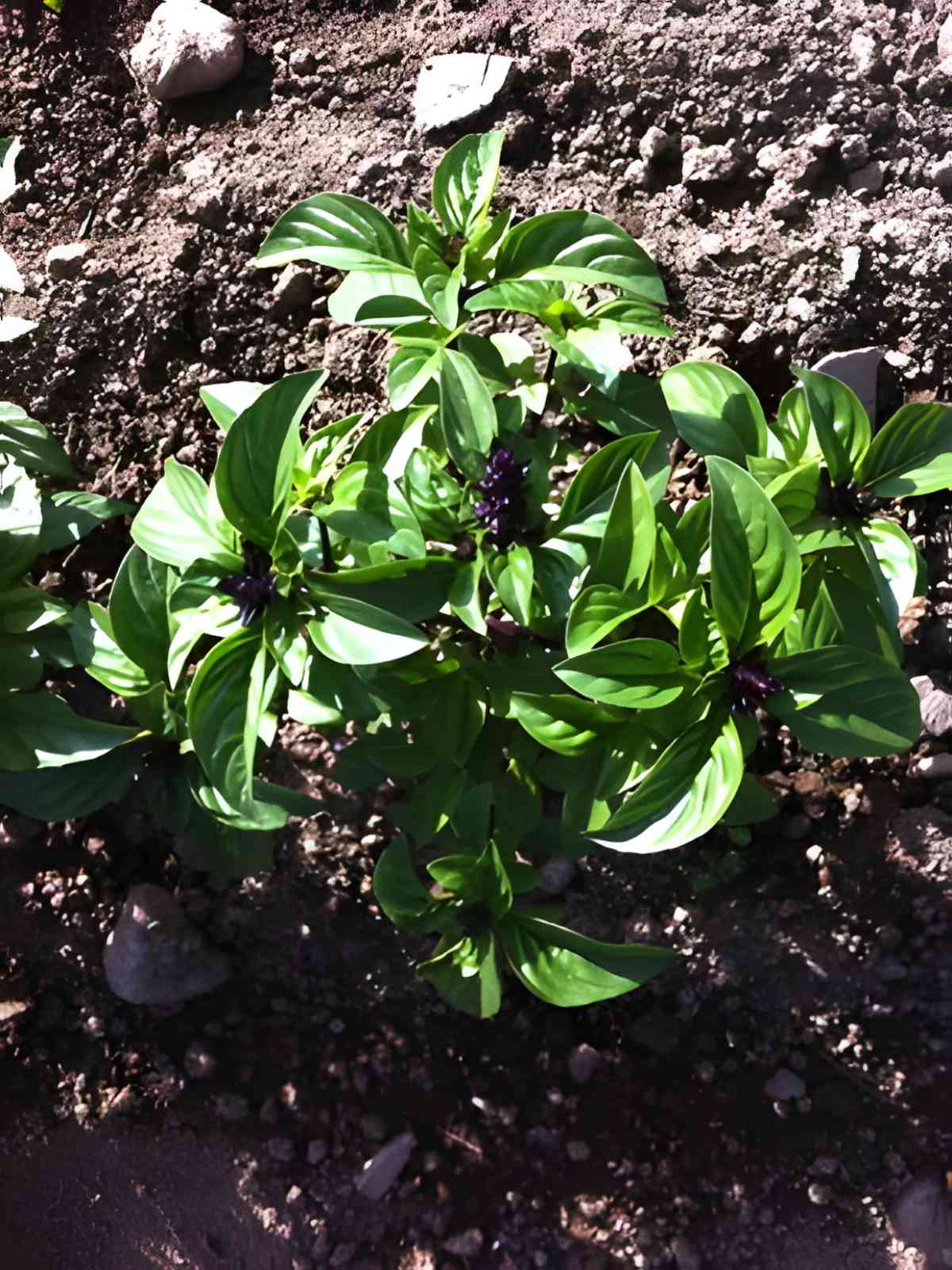
Anise basil, scientifically known as Ocimum basilicum 'Licorice,' is cherished for its striking resemblance in flavor to anise and licorice. This variety of basil is often grown for its culinary merits and ornamental qualities.
Appearance & Taste
Anise basil features lush, glossy green leaves with a slight purple undertone and delicate lavender flowers that bloom in the right conditions. It has a sweet, aromatic profile with strong notes of anise and licorice, making it distinctive among basil varieties.
Uses/Culinary
- Pesto: Ideal for creating a flavorful pesto that differs from traditional recipes.
- Culinary Enhancements: Adds a unique twist to basil-based dishes and pairs well with citrus fruits.
- Desserts and Beverages: Enhances the flavor of desserts and beverages with its licorice-like taste.
- Infusions: Perfect for infusing oils and vinegar, adding a distinctive flavor.
Unique Characteristics
- Aromatic Garden Use: Its strong aroma makes it suitable for scented gardens and as a companion plant to deter pests.
- Cocktail Ingredient: The unique flavor profile is great for experimental cocktail recipes, providing a herbal note with a sweet undertone.
- Ornamental Appeal: Anise basil's lush, glossy leaves and lavender flowers add ornamental value.
3. Blue Spice Basil
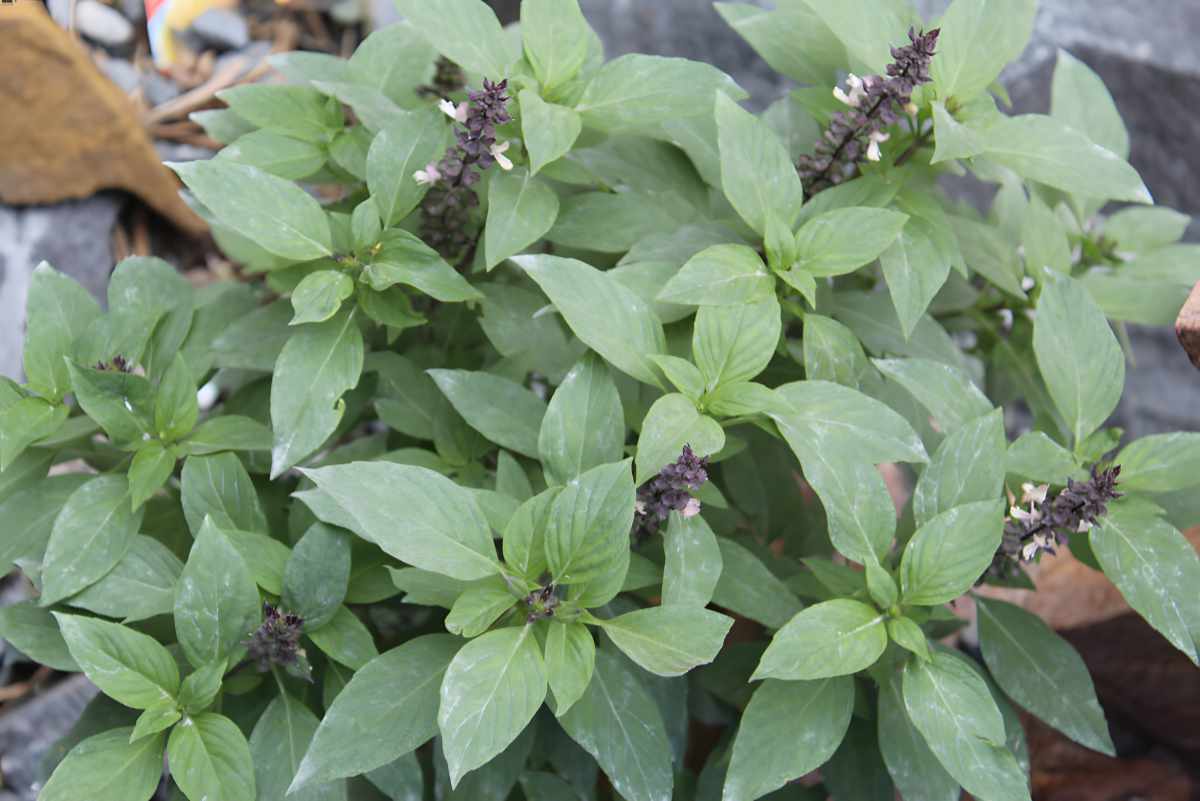
Blue Spice Basil, or Ocimum americanum, is also known as American basil, lime basil, or hoary basil.
This annual herb is part of the Lamiaceae family and is native to Africa, the Indian Subcontinent, China, and Southeast Asia. It has also naturalized in regions like Queensland, Christmas Island, and tropical America.
Appearance & Taste
This one stands out with its toothed, opposite leaves and clusters of small, white, or purple flowers. It grows up to 40 cm tall and emits a citrus-like scent, combining lime and traditional basil aromas, which permeates the entire plant, including its long taproot.
Uses/Culinary
- Similar Use as Sweet Basil: Utilized like sweet basil but offers a distinctive citrus twist.
- Flavor Enhancement: Its unique flavor profile is perfect for dishes that benefit from a hint of citrus, making it a versatile addition to the kitchen.
Unique Characteristics
- Pollinator Attraction: Its vibrant flowers and robust scent attract pollinators like bees, enhancing garden biodiversity.
- Ornamental and Practical Benefits: The dual aroma of lime and basil not only appeals to the olfactory senses but also adds aesthetic value to garden designs.
- Ecosystem Contribution: Helps in creating a healthy garden ecosystem
4. Boxwood Basil
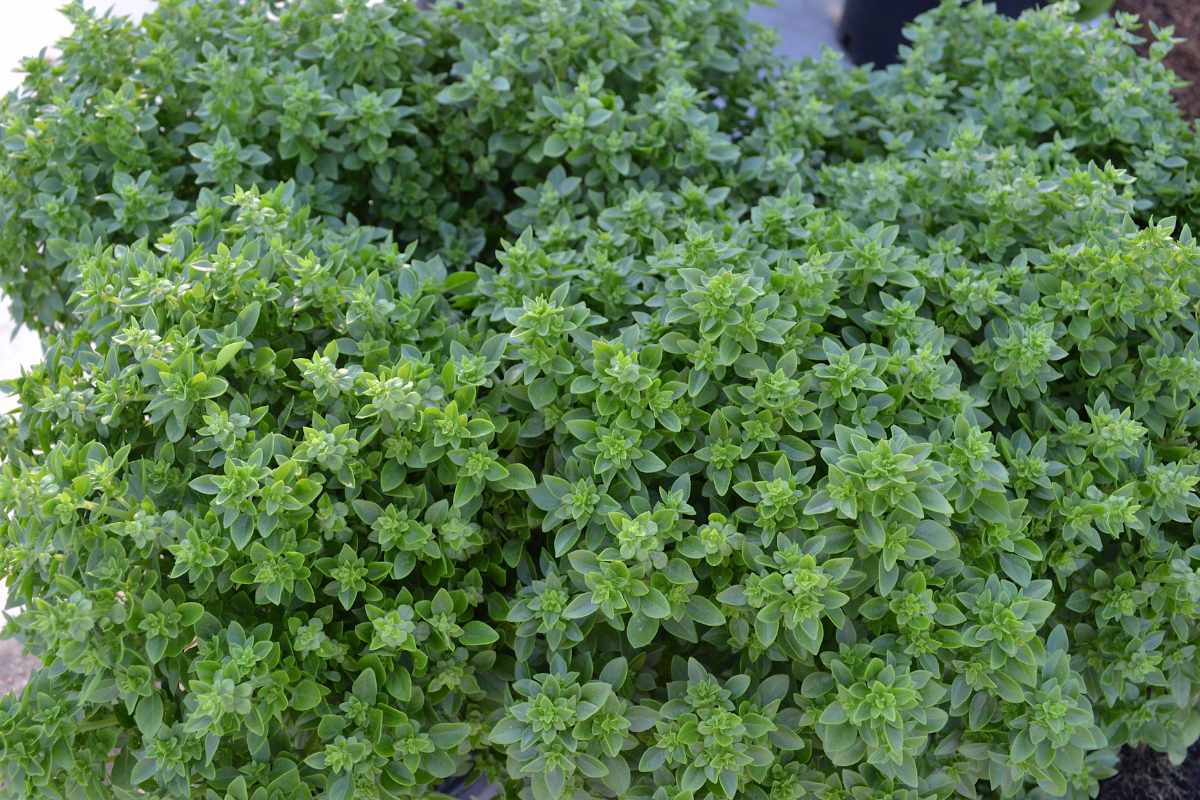
Boxwood Basil, scientifically known as Ocimum basilicum 'Boxwood', is aptly named for its visual similarity to boxwood shrubs used in formal gardens. This cultivar is prized for its compact, bushy stature, perfect for ornamental borders and culinary uses.
Appearance & Taste
This basil variant is known for its small, dense leaves that emulate the appearance of boxwood. The leaves are bright green with a fine texture, enhancing garden aesthetics.
It offers a classic sweet basil taste, milder and sweeter than its counterparts like Thai or Purple basil, known for their robust flavors.
Uses/Culinary
- Fresh Applications: It is ideal for fresh uses, such as pestos, and as a garnish for salads and soups.
- Complements Dishes: Enhances Italian and Mediterranean dishes with its subtle sweet flavor, perfect for refined plating.
Unique Characteristics
- Garden Aesthetics: Excels as a formal garden border, offering a dense, rounded shape that requires minimal pruning.
- Resilience Against Bolting: Notably robust against bolting, ensuring a prolonged harvest period.
- Practical and Ornamental: Serves both aesthetic and practical purposes in gardens, enhancing visual appeal while providing extensive culinary uses.
5. Cardinal Basil
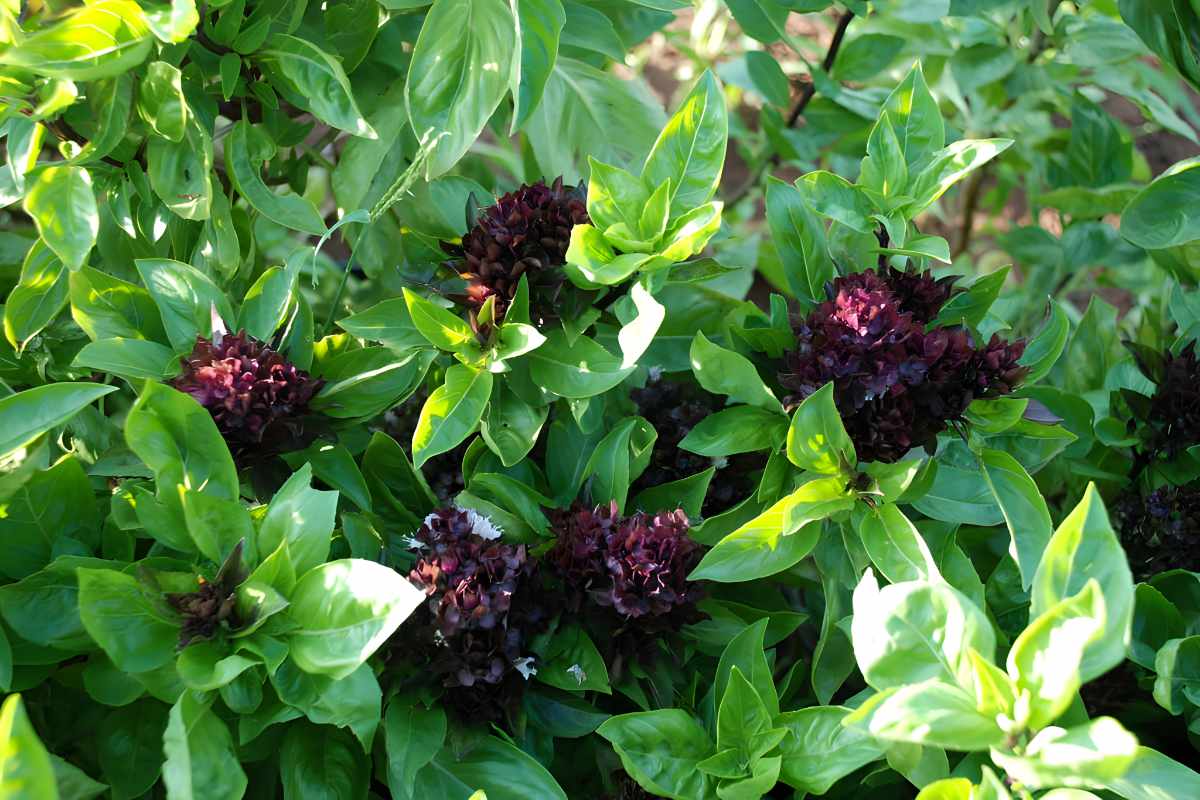
Cardinal Basil, scientifically known as Ocimum basilicum 'Cardinal', is a sweet basil cultivar distinguished by its ornamental and robust growth characteristics.
Native to the tropical regions spanning Central Africa to Southeast Asia, this variety has been specifically bred for its unique features, making it a favorite for culinary and decorative applications.
Appearance & Taste
Cardinal Basil is visually striking with its deep red flowers, rich green crinkly leaves, and vibrant red stems. This contrast not only makes it visually appealing but also enhances its culinary appeal. Its flavor is similar to sweet basil yet with a stronger, slightly peppery bite.
Uses/Culinary
- Basil-Driven Dishes: Ideal for making pesto, Caprese salads, and pasta sauces where its robust flavor shines.
- Garnishing: Its vibrant appearance enhances dishes with a pop of color and a piquant flavor, making it perfect for garnishing.
Unique Characteristics
- Ornamental Value: The 'Cardinal' cultivar is celebrated for its ornamental appeal, especially the edible, striking red flowers.
- Pollinator Attraction: These blooms beautify the garden and attract pollinators like bees and butterflies, promoting biodiversity.
- Culinary Decoration: Flowers are used decoratively in salads and desserts, adding flavor and visual appeal.
6. Christmas Basil
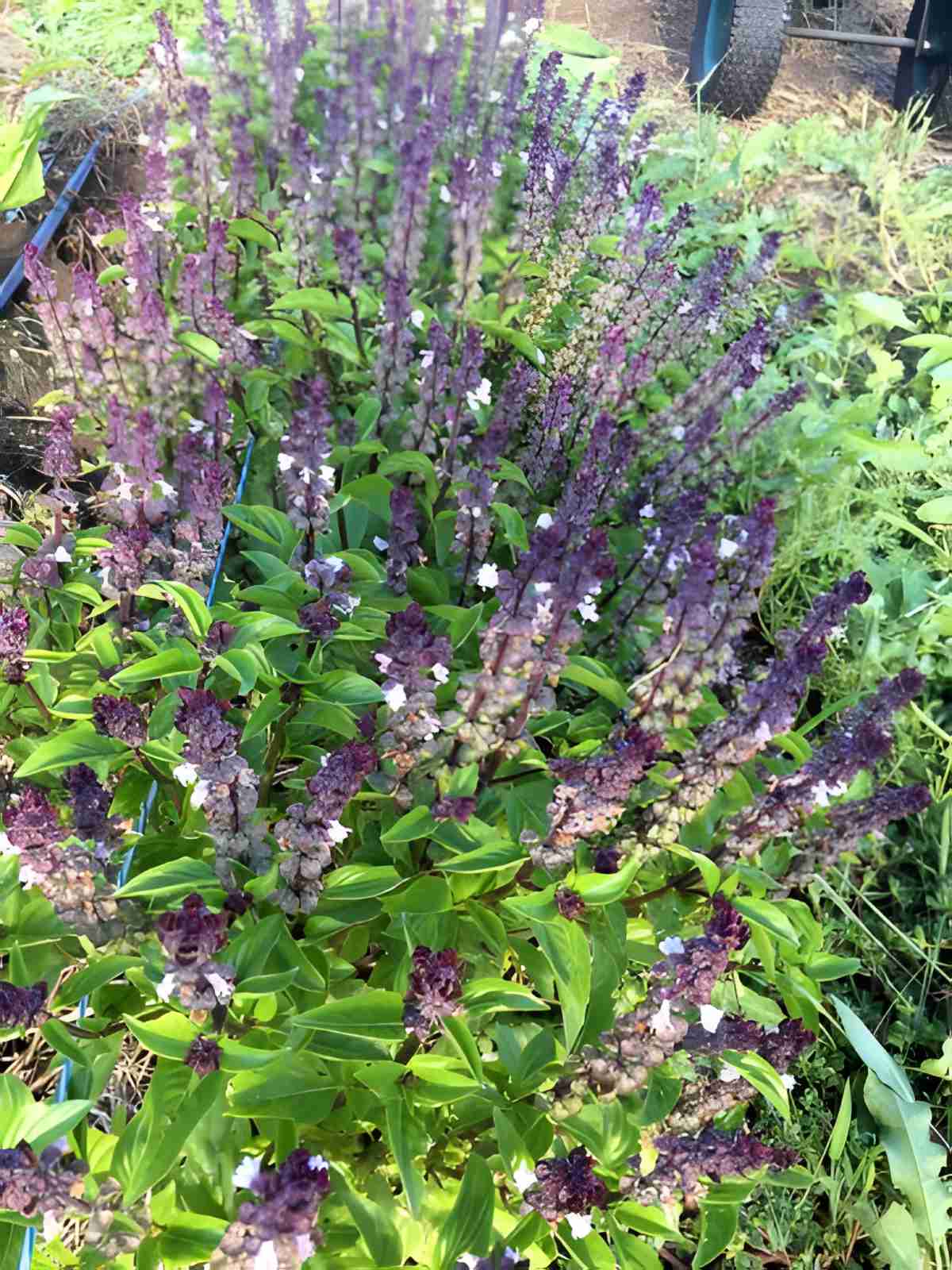
Christmas Basil is a sweet basil cultivar known for its aroma and flavor, which are reminiscent of holiday spices such as cinnamon and clove. It is grown for its culinary uses and aesthetic appeal.
Appearance & Taste
This variety has vibrant green leaves, slightly curled at the edges, with white flowers that stand out against the dark foliage. Its taste carries hints of cinnamon and clove, perfect for festive dishes.
Uses/Culinary
- Holiday Cooking: Enhances mulled wines, spiced desserts, and savory dishes with a warm spice touch, perfect for festive recipes.
- Syrups and Teas: Ideal for creating flavorful syrups for cocktails and aromatic teas.
Unique Characteristics
- Abundant Harvest: Vigorous growth ensures a plentiful harvest suitable for fresh use and preservation.
- Ornamental Plant: Serves as a decorative element in gardens due to its attractive foliage and flowers, enhancing garden aesthetics.
7. Cinnamon Basil
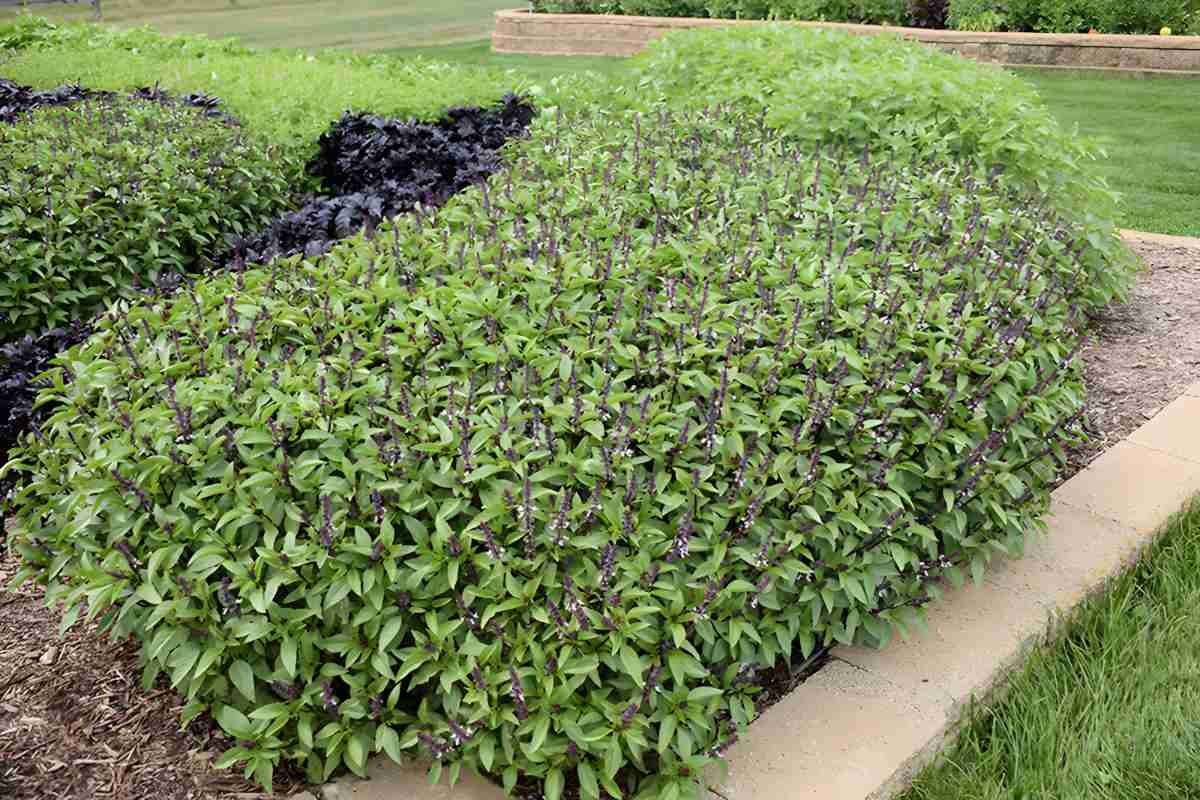
Cinnamon Basil, also known as Mexican Spice Basil, is a variant of common basil noted for its spicy cinnamon scent, thanks to the cinnamate in its leaves.
Appearance & Taste
This basil has small, glossy, deep green leaves with slightly serrated edges and reddish-purple stems, creating a striking visual contrast. The plant blooms small pink or white flowers that are edible. Its leaves release a spicy cinnamon aroma, stronger than traditional sweet basil.
Uses/Culinary
- Desserts and Sweet Dishes: Excels in fruit salads and spice rubs, enhancing flavors with its distinct cinnamon-like scent.
- Beverages: Complements teas and cocktails, adding a unique flavor profile.
- Pesto: Offers a unique twist when used in pesto, differentiating it from traditional recipes.
Unique Characteristics
- Pollinator Attraction: Attracts bees and butterflies, enhancing garden biodiversity.
- Aromatic Uses: Ideal for creating potpourri and herbal wreaths, especially suitable during the festive season due to its aromatic qualities.
- Decorative and Practical: Its ornamental appeal adds aesthetic value to gardens while providing practical uses in culinary and aromatic applications.
8. Clove Basil
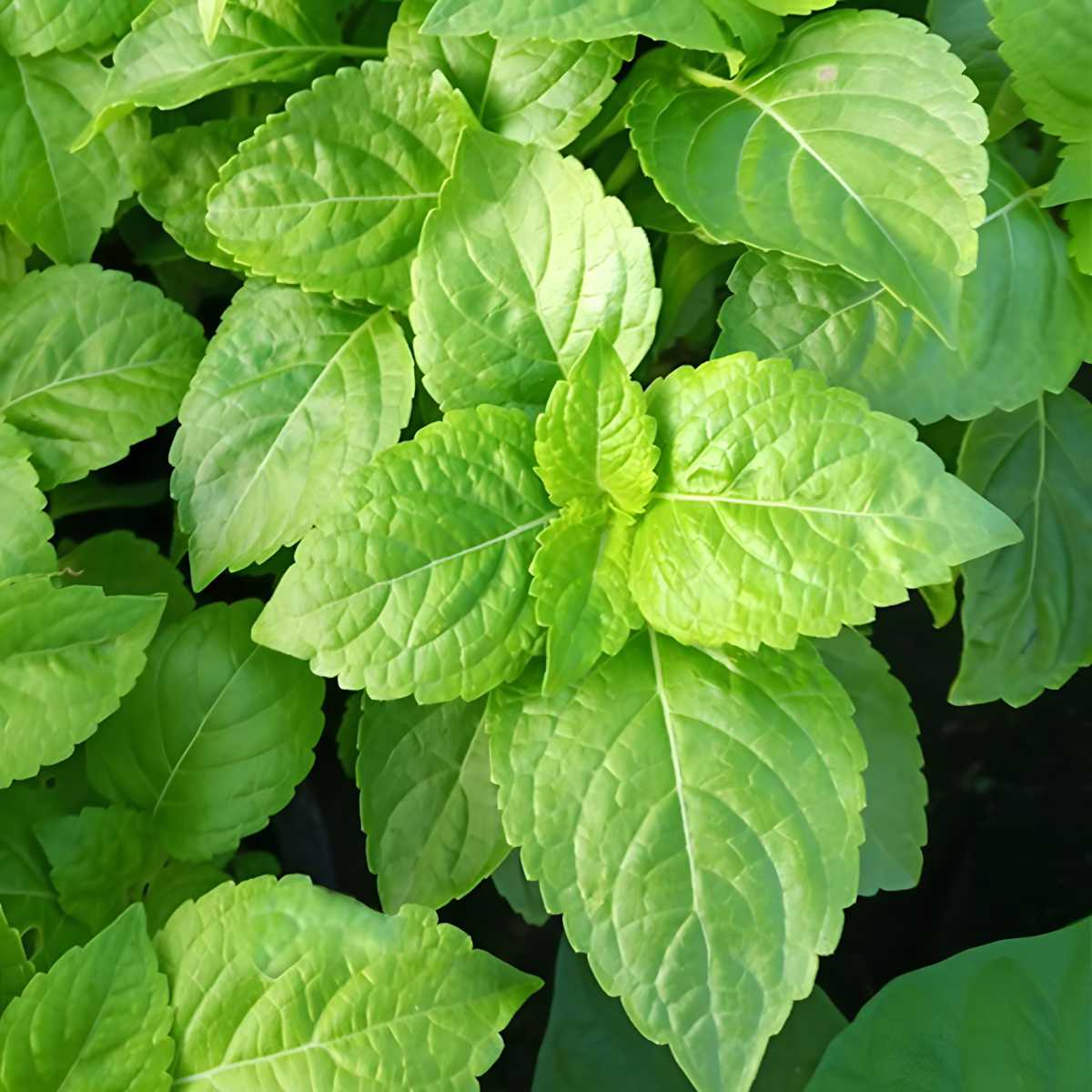
Clove Basil, also known as African Basil or Wild Basil, is native to Africa, Madagascar, and southern Asia and has spread to regions like Polynesia and Latin America. It is celebrated for its culinary versatility and medicinal properties.
Appearance & Taste
This basil variety has robust, woody stems and small, tough leaves that emit a potent clove-like aroma, thanks to the high eugenol content in its oil. The leaves are narrow, and the flowers are typically small and white.
Uses/Culinary
- West African and Caribbean Cuisines: Essential for adding a spicy, clove-like flavor to soups, stews, and hearty dishes.
- Pepper Soups and Rice Dishes: Enhances the traditional flavors of pepper soups and local rice preparations.
- Beans and Plantains: Complements and enhances the flavors of beans and plantains with its distinct aroma.
Unique Characteristics
- Organic Pest Control: Its strong scent effectively repels thrips and other pests, making it valuable for organic gardening.
- Antimicrobial Properties: The essential oil possesses antimicrobial qualities, making it a candidate for natural food preservation.
- Aromatic and Medicinal Uses: Also used for its aromatic properties in various therapeutic and preventive applications.
9. Dark Opal Basil
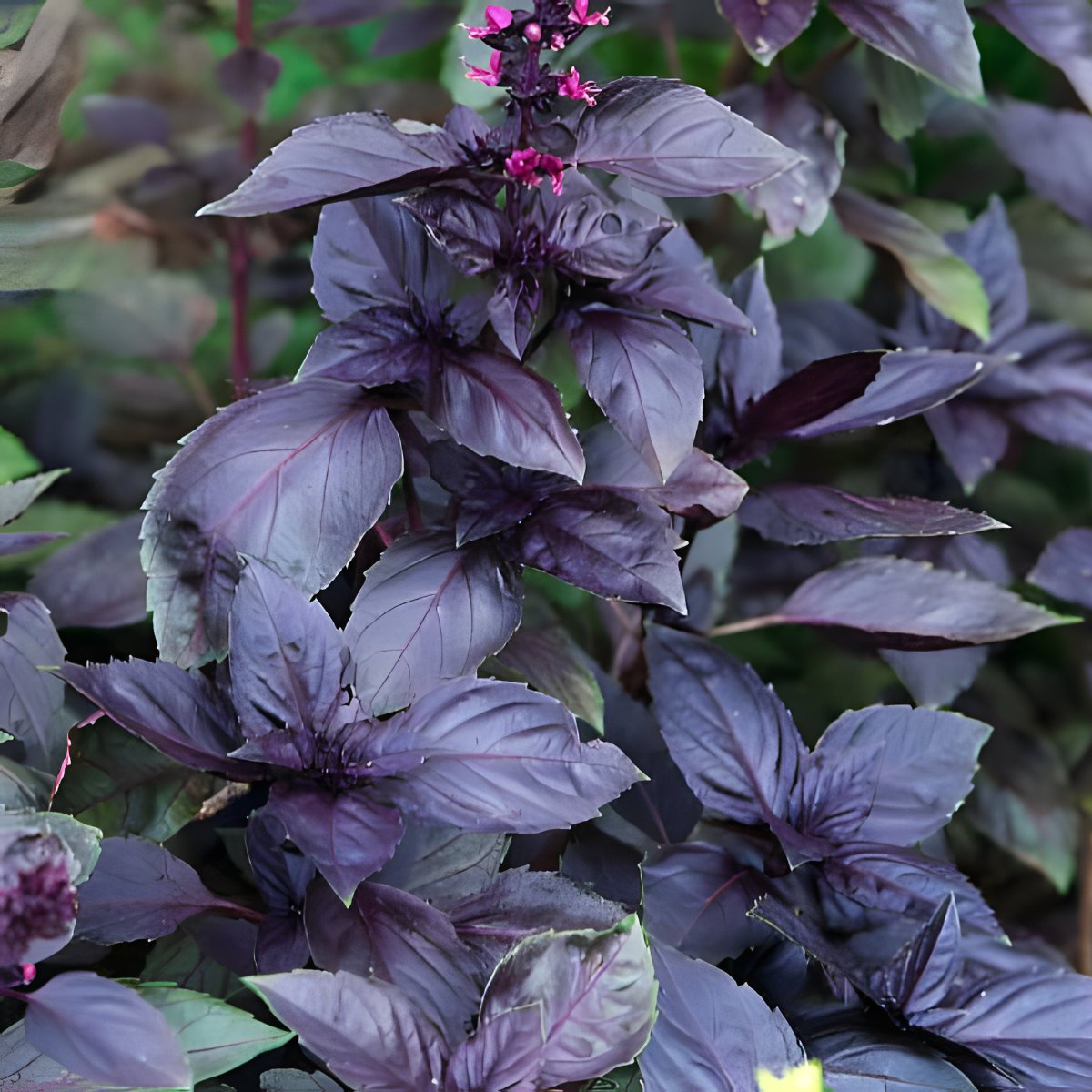
Dark Opal Basil is a cultivar of sweet basil known for its vibrant purple leaves, developed to add visual contrast in gardens and dishes.
Appearance & Taste
This basil features deep purple leaves that appear almost black, complemented by pink to lavender flowers. It grows bushy with serrated leaves and offers a flavor similar to sweet basil with a subtle, spicier note.
Uses/Culinary
- Salads: Adds a colorful twist to salads with its vibrant purple leaves.
- Garnishes: Ideal for enhancing the visual appeal of pizzas and pastas.
- Infusions: Perfect for use in vinegar and oils, where it imparts a striking color and subtle flavor.
Unique Characteristics
- Natural Food Dye: The intense purple color acts as a natural dye, making it valuable in culinary presentations.
- Decorative Use: Utilized as an ornamental plant to create visually appealing borders and accents in gardens.
- Pesto Ingredient: Provides a unique hue to pestos, enhancing their color and flavor.
10. Fino Verde Basil
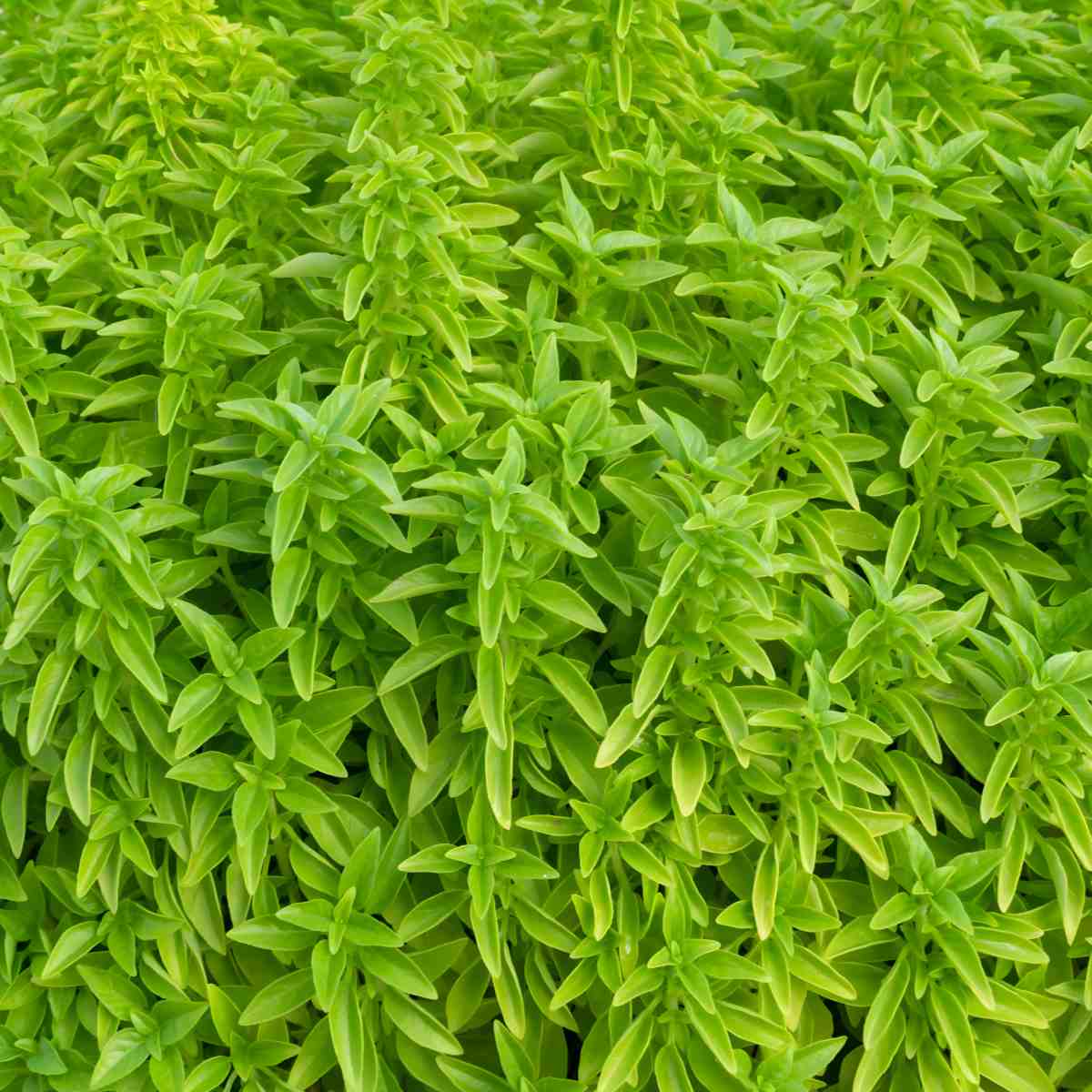
Fino Verde Basil (Ocimum basilicum 'Fino Verde') is a cultivar known for its compact growth and small leaves, ideal for container gardening. This variety is part of the diverse family of basils used worldwide for culinary and decorative purposes.
Appearance and Taste:
Fino Verde Basil features bright green, miniature leaves much smaller than traditional sweet basil, contributing to a dense, bushy appearance. It delivers a potent flavor that is peppery and slightly sweet with a minty undertone.
Health Benefits
- Rich in Nutrients: Fino Verde Basil is abundant in Vitamin K, antioxidants, and essential oils.
- Anti-inflammatory Properties: Offers benefits such as reducing inflammation, which supports overall health.
- Cardiovascular Health: Aids in cardiovascular health through its antioxidant properties that help reduce oxidation.
Uses/Culinary
- Italian Pesto: Perfect for creating rich, flavorful Italian pesto due to its concentrated flavor.
- Salads and Pizzas: Ideal for salads and pizzas where its small leaf size and robust flavor enhance the dish.
- Infused Oils: Excellent for making infused oils, adding a subtle yet distinct basil flavor.
Unique Characteristics
- Urban Gardening: Well-suited for urban settings due to its compact size and reduced tendency to bolt.
- Flavor Retention: Maintains flavor intensity for a longer period, making it a practical choice for gardeners.
- Aesthetic Appeal: Adds decorative value to gardens with its lush, dense foliage, enhancing garden aesthetics.
11. Genovese Basil
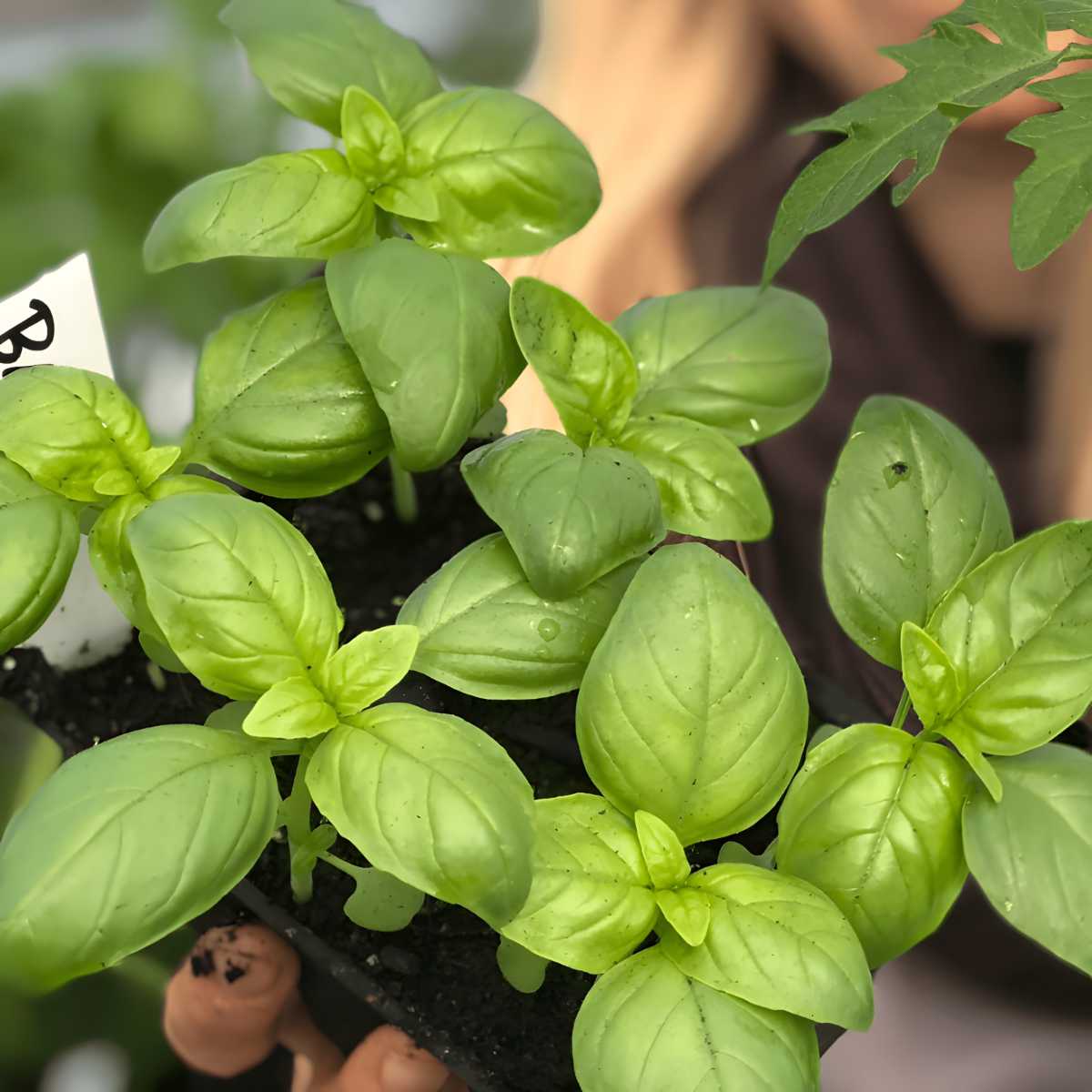
Genovese Basil (Ocimum basilicum 'Genovese'), commonly referred to as Sweet Basil, is favored for its large, bright green, slightly wrinkled leaves with a strong, sweet aroma and subtle anise notes.
Appearance and Taste:
This variety stands out with its large leaves and robust flavor, enriched by high concentrations of essential oils such as linalool and methyl chavicol, contributing to its distinct aroma and taste..
Uses/Culinary
- Italian Cuisine: Essential for creating traditional pesto and enhancing tomato-based dishes.
- Salads and Infused Oils: Perfect for salads and making infused oils, where its large leaves provide robust flavor.
- Versatile Cooking Ingredient: Ideal for recipes that require whole or coarsely chopped basil, enhancing the dish's overall taste.
Unique Characteristics
- Growth and Maintenance: Grows to 30-60 cm, requiring regular pruning to maintain a bushy form and prevent early flowering.
- Flavor Preservation: Harvesting leaves before flowering ensures optimal flavor and promotes continued leaf production.
- Aromatic Essential: Valued for its significant flavor and aromatic qualities, it is indispensable in culinary applications.
12. Greek Basil
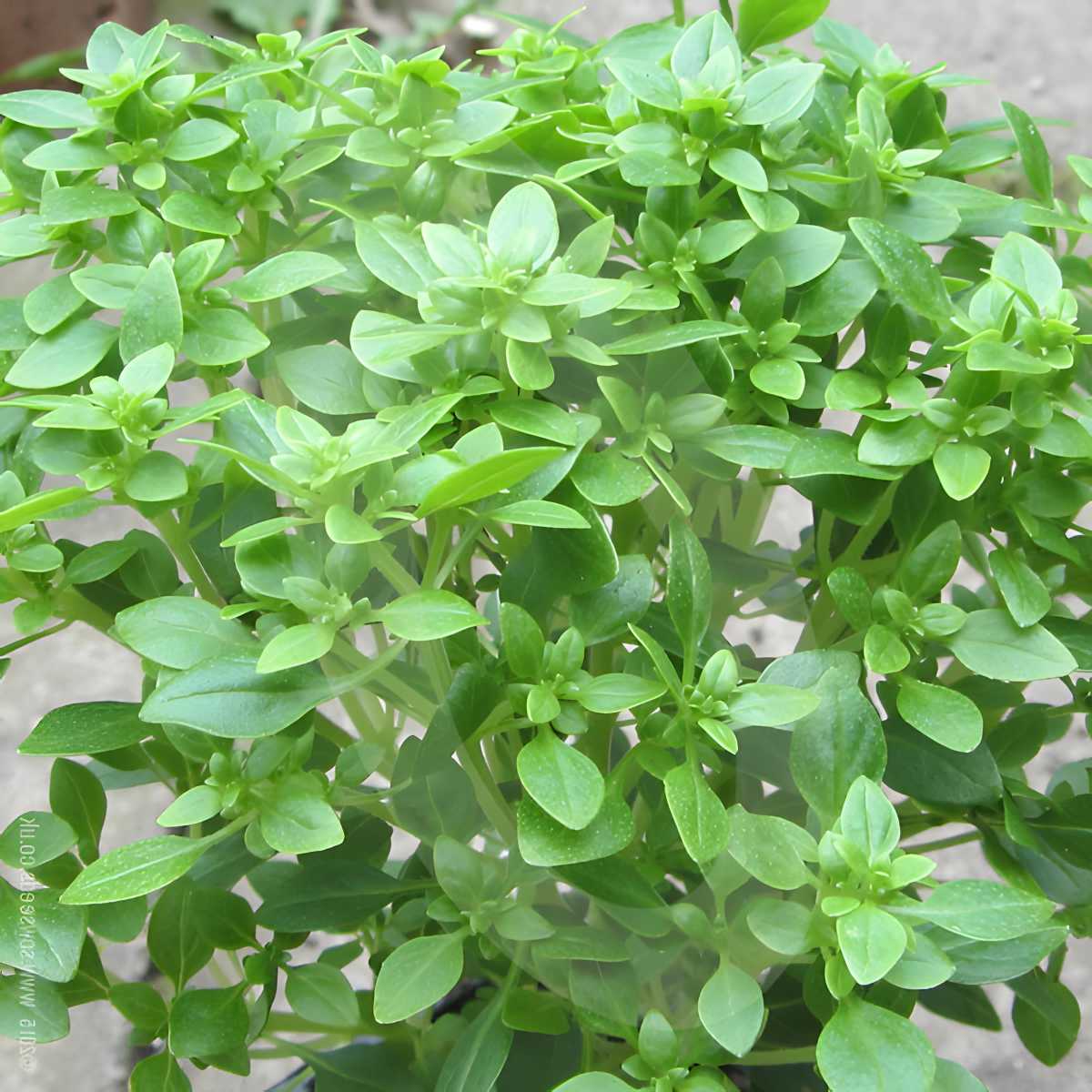
Greek Basil (Ocimum basilicum var. minimum) is a compact variety of common basil favored for small garden spaces and container gardening.
Appearance and Taste
This variety displays a bushy growth with small, bright green leaves and produces white to pink tubular flowers. The flavor is milder and sweeter than traditional basil, making it ideal for subtle flavor enhancements.
Uses/Culinary
- Mediterranean Cuisine: Ideal for pesto, salads, and as a garnish, complementing Mediterranean flavors perfectly.
- Infusions: Well-suited for infusing oils and vinegar, enhancing them with their mild, sweet taste.
Unique Characteristics
- Urban Gardening: Its compact size makes it perfect for window boxes and pots, and it is perfect for urban settings.
- Ornamental Appeal: Features dense foliage and colorful flowers that add decorative value to any garden space.
- Distinct Flavor: Offers a sweeter, less pungent taste compared to other basil varieties, making it unique in flavor profiles.
13. Greek Columnar Basil
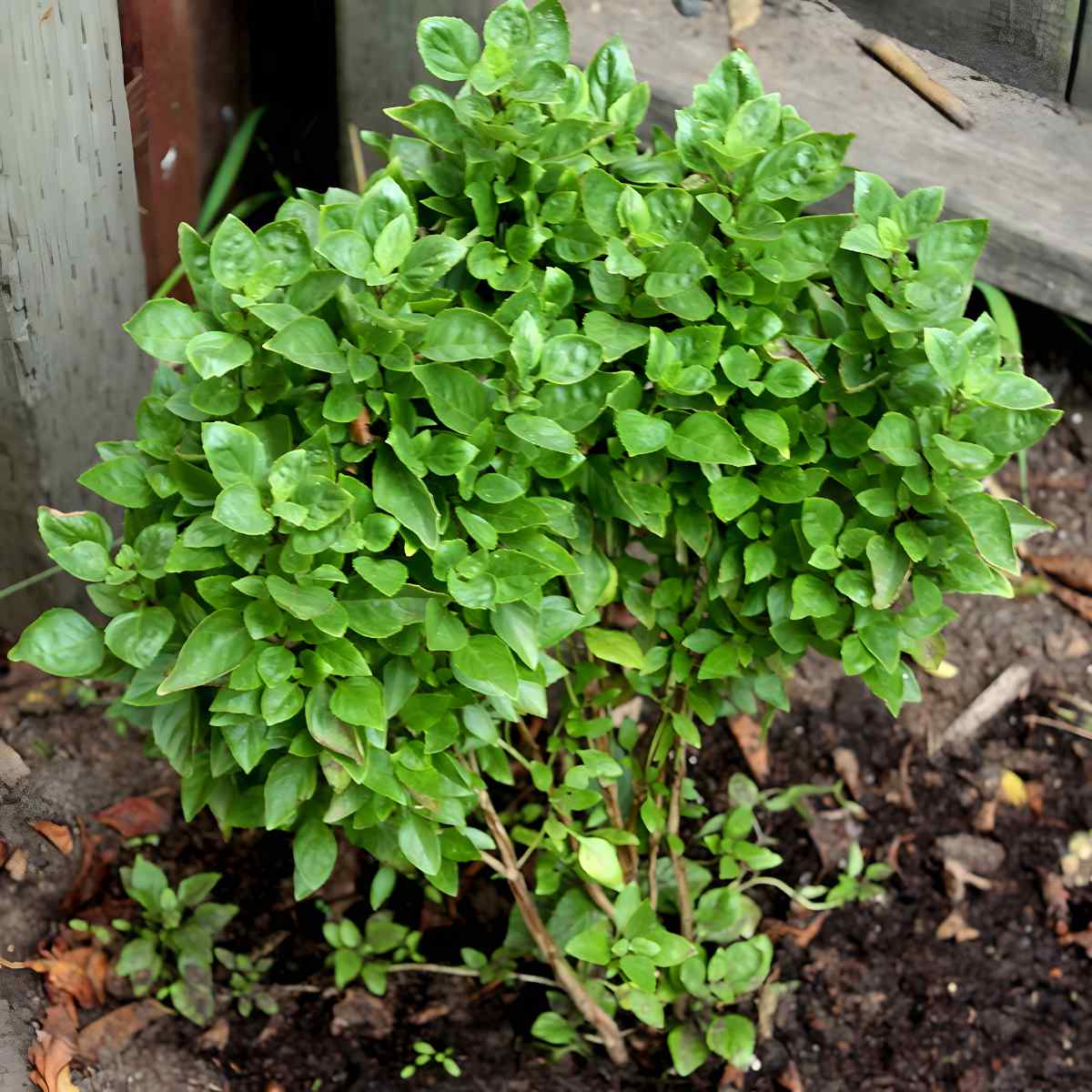
Greek Columnar Basil (Ocimum basilicum var. minimum 'Greek'), also known as Greek Basil or Bush Basil, is characterized by its compact, bushy growth and small, bright green leaves. It typically blooms pink or white tubular flowers in late summer.
Appearance and Taste:
This variety has smaller leaves and softer stems than other sweet basil types, offering a strong clove-like flavor that enhances culinary dishes.
Health Benefits:
- Rich in vitamins and antioxidants.
- Promotes cardiovascular health.
- Provides anti-inflammatory properties.
Uses/Culinary:
- Excellent for fresh use in salads, pestos, and tomato-based sauces.
- Suitable for freezing or drying for extended use.
Unique Characteristics:
- Ideal for container gardening; thrives in well-draining soil and warm, sheltered environments.
- Propagation through seeds or cuttings.
- Requires regular moisture and nitrogen-rich fertilization.
- Harvesting the top leaves promotes new growth.
- Edible flowers add aesthetic and flavor value to dishes.
14. Green Ruffles Basil
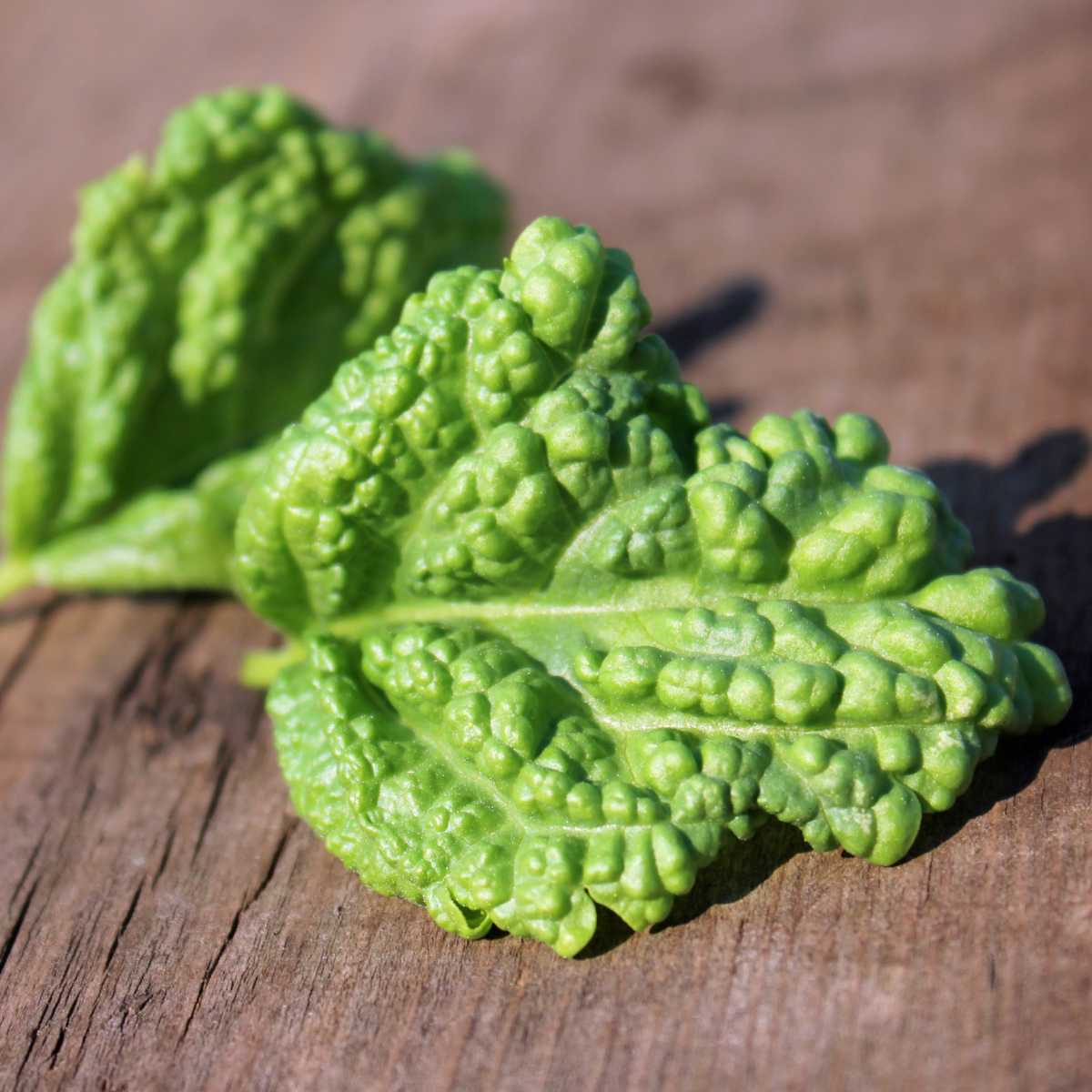
Green Ruffles Basil is a cultivar of Ocimum basilicum, notable for its large, curly leaves that resemble ruffled lettuce.
Taste and Health Benefits This basil offers a mild, sweet flavor with a peppery undertone, making it less pungent than traditional sweet basil. It is rich in Vitamin K and has anti-inflammatory properties, supporting cardiovascular health.
Uses/Culinary
- Salads: Highly valued raw in salads for its crisp texture and flavor enhancement.
- Garnishes: Ideal as a garnish on pizzas and soups, adding a fresh, aesthetic touch.
- Sandwiches: Provides a flavorful, crisp addition to sandwiches.
- Infusions: Used in making infused oils and vinegars, appreciated for its gentle flavor and decorative appeal.
Unique Characteristics
- Ornamental Appeal: Celebrated for its ornamental qualities in gardens, where its unique leaf shape and vibrant color add visual interest.
- Cultivation Requirements: Grows similarly to other basil varieties, preferring warm, well-lit environments and necessitating regular watering to remain healthy and lush.
15. Holy Basil (Tulsi)
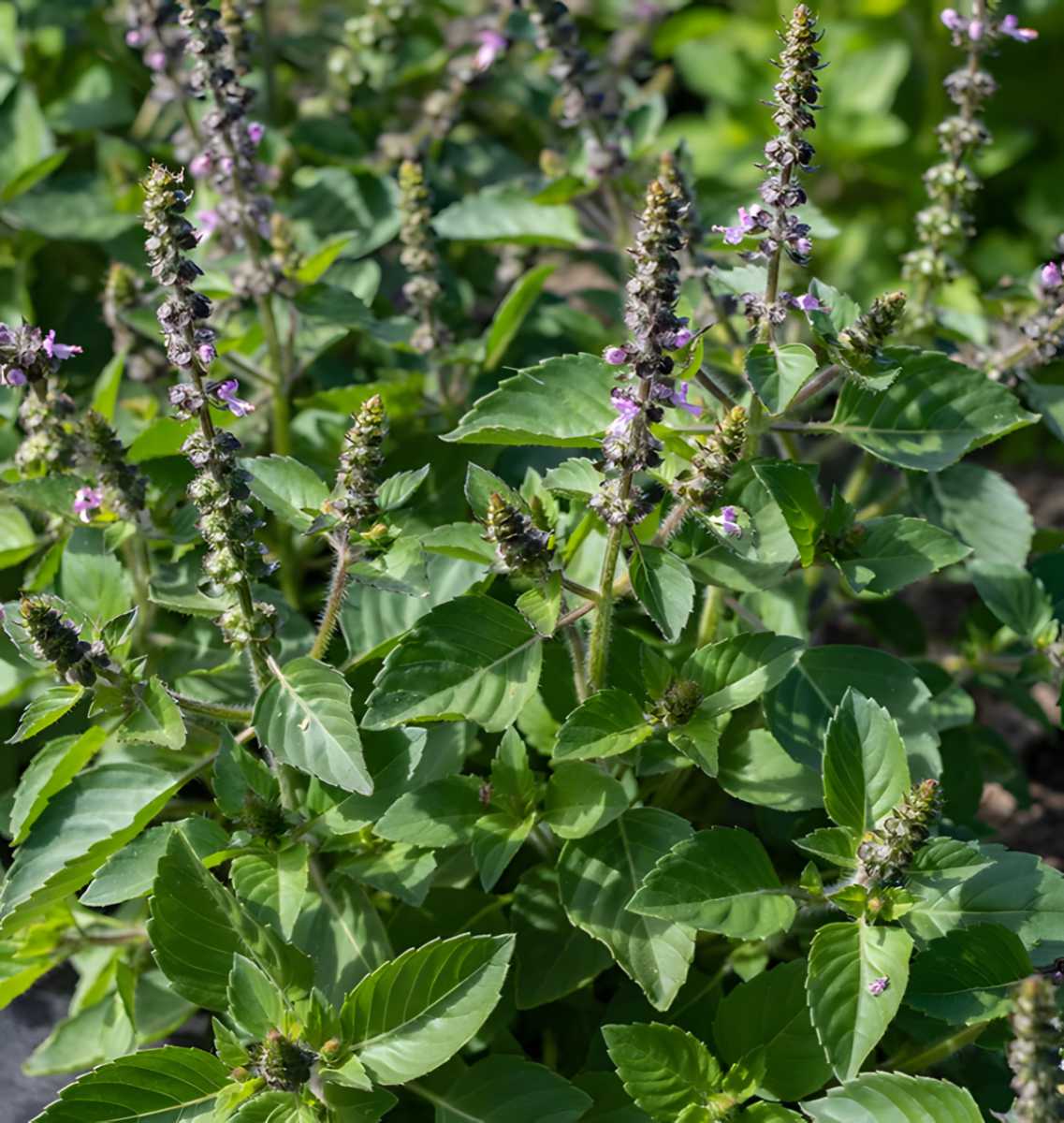
Holy Basil, or Tulsi (Ocimum tenuiflorum), is native to India and integral to Ayurvedic medicine. It is associated with the goddess Lakshmi and used in Hindu religious practices.
Taste and Appearance
Known as "hot basil" for its pepper flavor, Holy Basil's leaves emit a clove-like aroma due to eugenol, with additional floral notes from linalool and a spicy kick from caryophyllene and carvacrol.
Health Benefits
- Adaptogenic Properties: Helps manage stress and supports bodily balance.
- Blood Sugar and Cholesterol Management: Beneficial for controlling blood sugar levels and managing cholesterol.
- Cognitive Enhancement: Enhances cognitive functions due to its antioxidant-rich phytochemicals.
Uses/Culinary
- Thai Cuisine: Used to enhance the flavors of stir-fries and curries, complementing the robust tastes of Thai dishes.
- Staple in Indian Cuisine: Remains a crucial ingredient in traditional Indian and Thai recipes.
Unique Characteristics
- Spiritual Significance: Holds a sacred place in Hinduism, symbolizing purity and devotion in daily rituals and worship.
- Cultural and Medicinal Importance: Its extensive use in cultural and religious contexts highlights its profound medicinal and spiritual value.
16. Hoary Basil
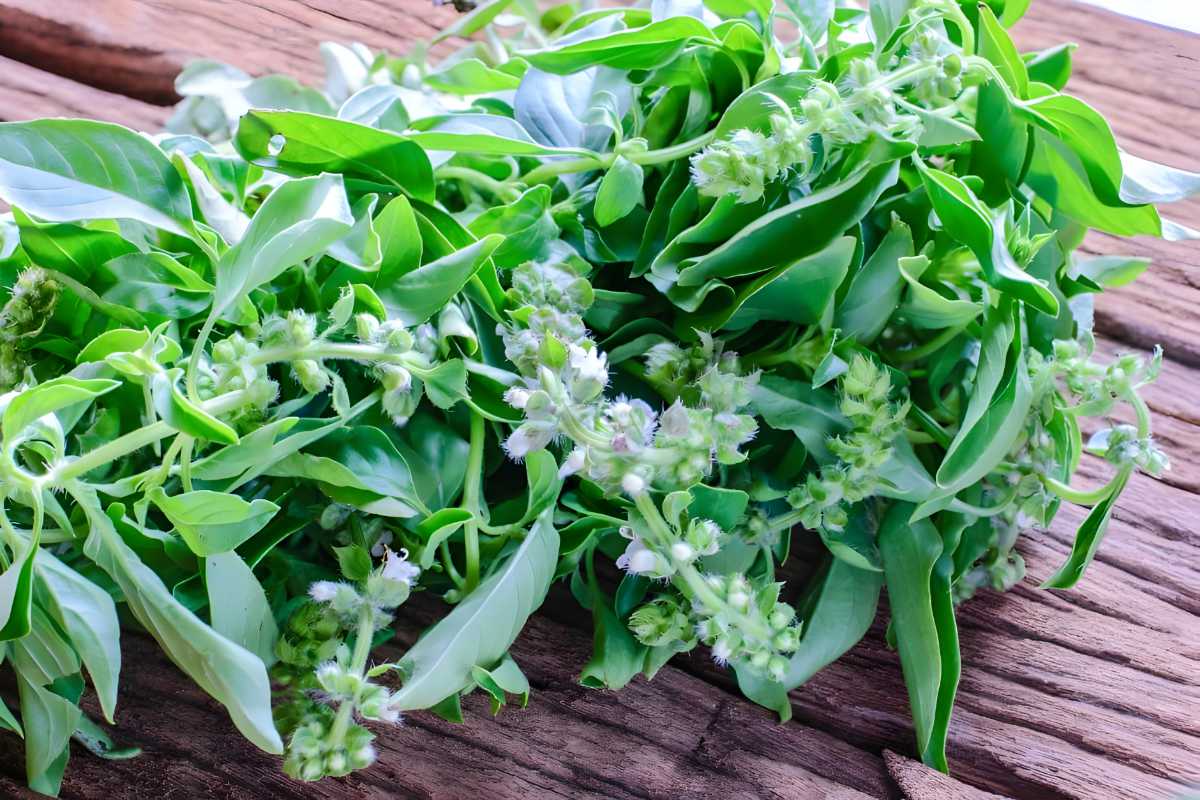
Holy Basil (Ocimum tenuiflorum), native to India, is central in Ayurvedic medicine and Hindu practices. Hoary Basil, despite its name, originates from Africa and parts of Asia and is now also found in tropical America.
Taste and Appearance
Holy Basil has a peppery taste with a clove-like aroma from eugenol, while Hoary Basil offers a citrusy fragrance and features hairy, toothed leaves with white or purple flowers.
Health Benefits
- Holy Basil: Utilized for stress management, blood sugar regulation, and cognitive enhancement thanks to its rich antioxidant content.
- Hoary Basil: Noted for its anti-inflammatory properties and used in various traditional medicinal practices.
Culinary Uses
- Holy Basil: Prominent in Thai cuisine, where its robust flavor enhances stir-fries and curries.
- Hoary Basil: Known for its citrusy zest, it is used to add a lime-like flavor to culinary dishes.
Unique Characteristics
- Holy Basil: Holds a crucial role in Hindu rituals, symbolizing purity and devotion, integral to religious practices.
- Hoary Basil: Highly adaptable, it has become an environmental weed in some areas, showcasing its strong survival characteristics.
17. Italian Basil
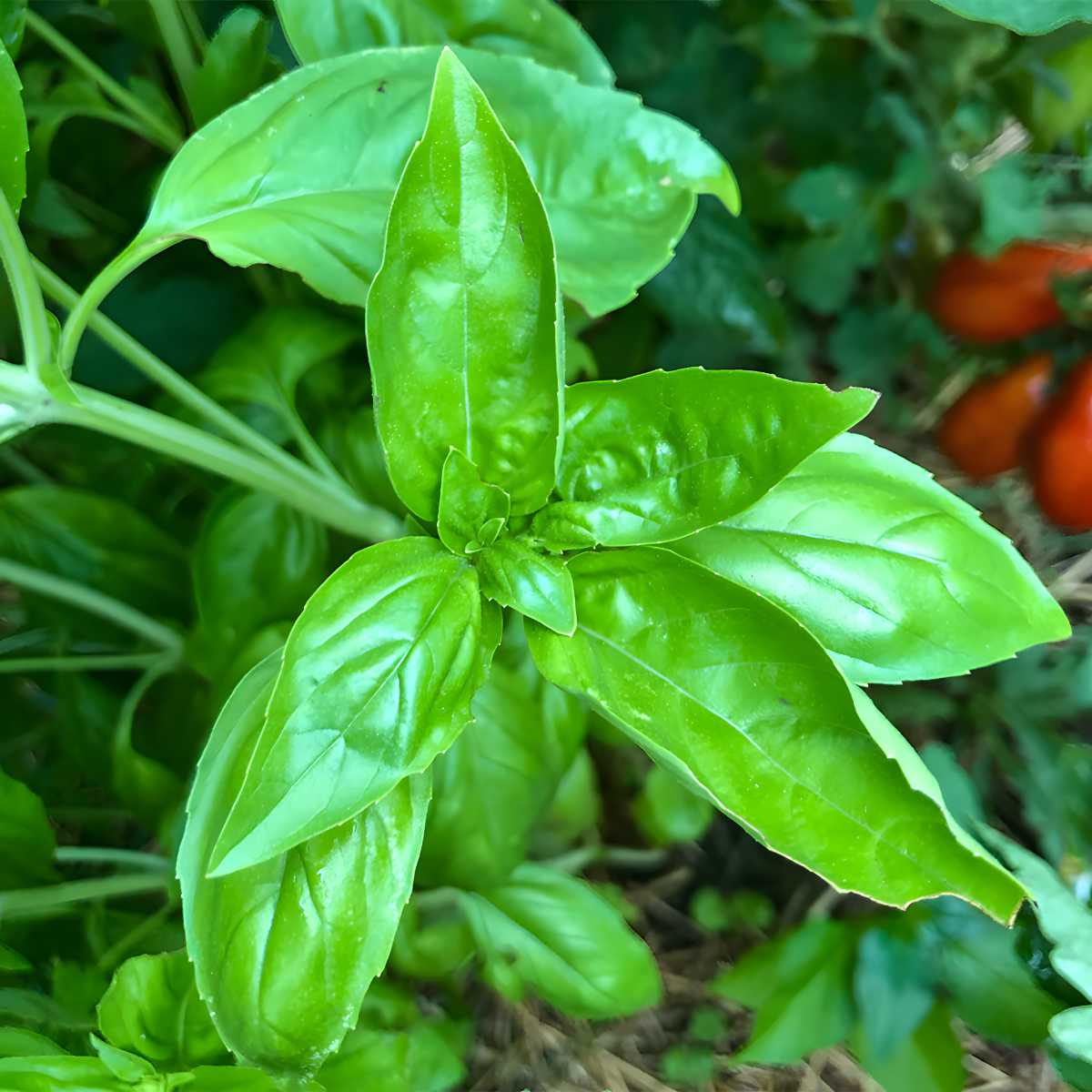
Italian Basil, known as Sweet Basil or Genovese Basil, is a member of the mint family Lamiaceae and is crucial to Mediterranean and Italian cuisines.
Taste and Appearance
Italian Basil is characterized by its lush, green leaves that are slightly curved with smooth edges and its small, white flowers. The leaves are aromatic and tender, making them ideal for fresh culinary applications.
Health Benefits
- Nutritional Value: Rich in vitamins A, C, K, and essential minerals.
- Anti-inflammatory Properties: Contains linalool, which offers soothing and anti-inflammatory benefits.
- Antioxidant Capacity: Packed with antioxidants that help neutralize free radicals.
- Digestive and Antibacterial: Used traditionally as a digestive aid and for its antibacterial properties.
Culinary Uses
- Pesto Ingredient: Essential for making traditional Italian pesto.
- Enhances Dishes: Improves salads, pizzas, and pasta sauces with its fresh, aromatic flavor.
- Cooking Recommendations: Best added at the end of the cooking process to preserve its delicate taste.
Unique Characteristics
- Climate Adaptability: Thrives in warm, tropical to temperate climates but requires protection from frost.
- Varietal Diversity: Includes varieties like Purple Basil, Lemon Basil, and Thai Basil, each enhancing different culinary traditions with unique flavors and aesthetic appeal.
18. Italian Large Leaf Basil
Italian Large Leaf Basil, or Napolitano or Neapolitan Basil, originates from Peter Borchard, Companion Plants, Athens, Ohio, 1983.
Appearance and Taste
When young, this basil variety starts with purple leaves, which mature into green with purple veins. The plant emits a strong camphor aroma but has a rich, mellow flavor.
Uses/Culinary
- Pesto Making: Great for pesto due to its large leaf size, which blends smoothly with olive oil and pine nuts.
- Cooking: Enhances the flavor of soups and stews and is perfect for layering in fresh dishes like Caprese salad.
- Versatile Ingredient: Works well in a variety of recipes that call for basil, particularly those that benefit from its robust flavor and large leaves.
Unique Characteristics
- Perennial Growth: Unlike most basil varieties, it is a sterile perennial that can only be propagated through cuttings.
- Attracts Pollinators: Its profuse blooming attracts bees and other beneficial insects, contributing positively to garden ecosystems.
- Culinary Favorite: Its size and flavor make it a preferred choice for chefs and home cooks looking to elevate their dishes with a visually appealing and flavorful herb.
19. Lemon Basil
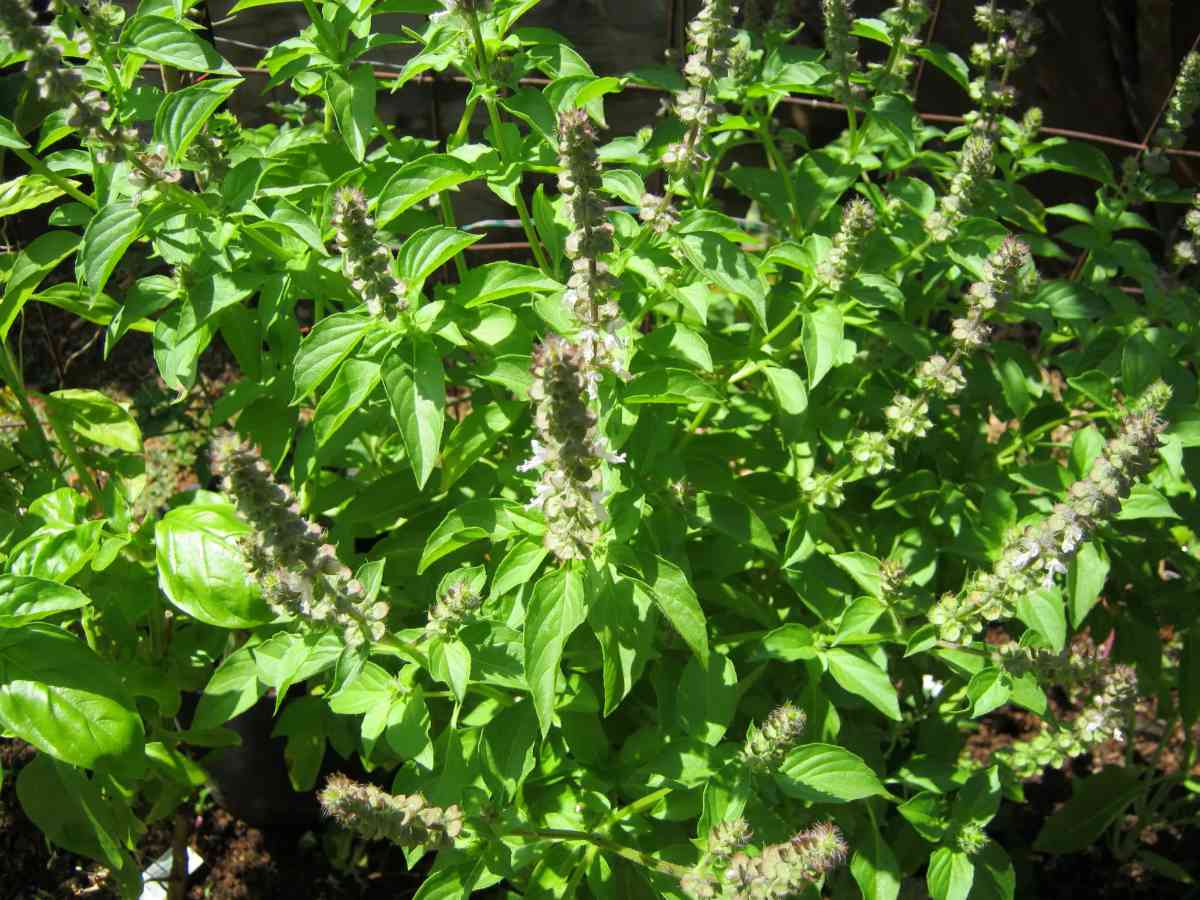
Lemon Basil, a hybrid between Sweet Basil (Ocimum basilicum) and African Basil (Ocimum americanum), is renowned for its distinctive lemony scent and flavor, which make it a favored herb in both Mediterranean and Asian cuisines.
Taste and Appearance
Lemon Basil is characterized by lush, green leaves that exude a strong citrus aroma, primarily due to the presence of linalool. This gives the herb a refreshing lemony zest that enhances its culinary appeal.
Culinary Uses
- Indonesian Cuisine: Integral for adding a lemony zest to many dishes.
- Mediterranean Dishes: Enhances salads, marinades, and seafood with its citrus flavor.
- Herbal Teas: Used to create flavorful and digestive-friendly teas.
Unique Characteristics
- Aromatic Uses: The essential oils of Lemon Basil are used in perfumery, aromatherapy, and as food flavoring agents.
- Cultivation: Thrives in warm, sunny, and well-drained conditions, typically grown as an annual in temperate zones.
- Industry Value: Besides culinary applications, it is prized in various industries for its aromatic and flavoring properties.
20. Lime Basil
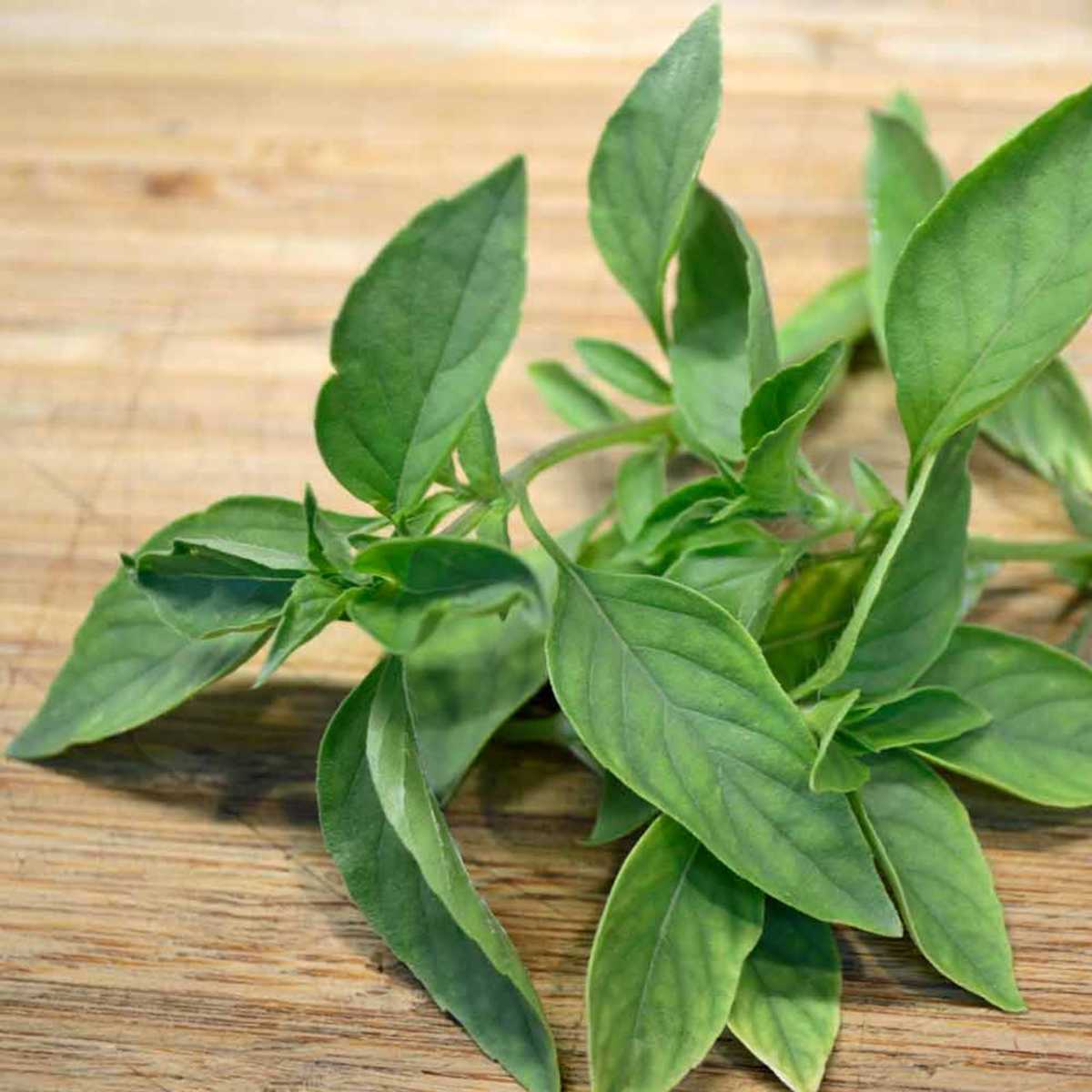
Lime Basil is commonly referred to as American basil or hoary basil. This annual herb originates from Africa, the Indian Subcontinent, China, and Southeast Asia. It has also naturalized in regions like Queensland, Christmas Island, and tropical America.
Appearance & Taste Lime Basil grows up to 40 cm tall and features toothed, opposite leaves along with clusters of small, white or purple flowers. It has a long taproot that enhances its adaptability to various soil conditions. The plant emits a citrusy aroma reminiscent of lime mixed with traditional basil, which is highly favored in culinary and aromatic applications.
Uses/Culinary
- Salads & Beverages: Utilized for its distinct citrus aroma, adding a refreshing lime accent.
- Aromatherapy & Flavoring: Its essential oil is used in the food industry and aromatherapy, blending lime and basil scents.
- Medicinal Uses: Recognized traditionally for its health benefits.
Unique Characteristics
- Aroma Profile: The combination of lime and basil scents makes this basil variant particularly appealing for culinary and therapeutic applications.
- Adaptability: Lime basil's robust taproot allows It to thrive in diverse environmental conditions, making it a practical choice for various geographical locations.
21. Lettuce Basil
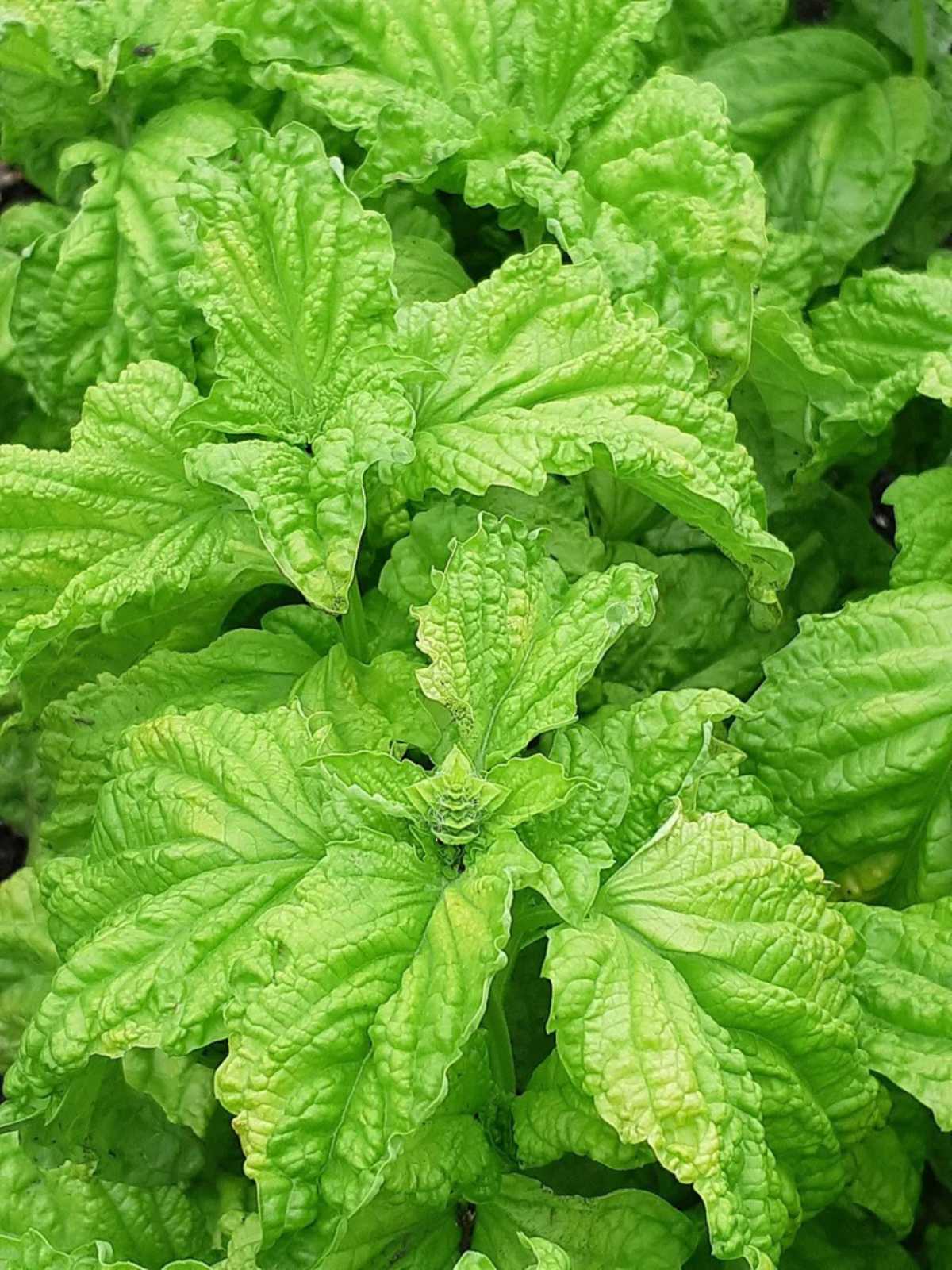
Lettuce Basil, scientifically known as Ocimum basilicum 'Crispum,' is a cultivar of sweet basil distinguished by its large, crinkled leaves reminiscent of lettuce. It is valued for its aesthetic appeal in gardens and its versatility in the kitchen.
Taste and Appearance
Lettuce Basil features large, bright green leaves that are broad and wrinkly with a soft, velvety texture. It retains the classic sweet basil flavor but with a milder intensity, making it suitable for recipes where a subtle basil taste is desired.
Uses/Culinary
- Wraps and Sandwiches: Its large leaves serve as natural, low-carb alternatives to bread, infusing a fresh, herbal flavor.
- Salads: Perfect for basil-centric green salads, its substantial leaf size and mild taste offer a refreshing component.
- Pesto: Creates a milder version of traditional pesto, which provides flavor without overwhelming other ingredients.
Unique Characteristics
- Garden Aesthetics: The distinctive, large, crinkled leaves not only serve culinary purposes but also add decorative appeal to garden settings.
- Kitchen Versatility: Its unique leaf structure enhances its utility in the kitchen, making it ideal for a variety of dishes where less pungent basil is desired.
22. Bolloso Napoletano Basil
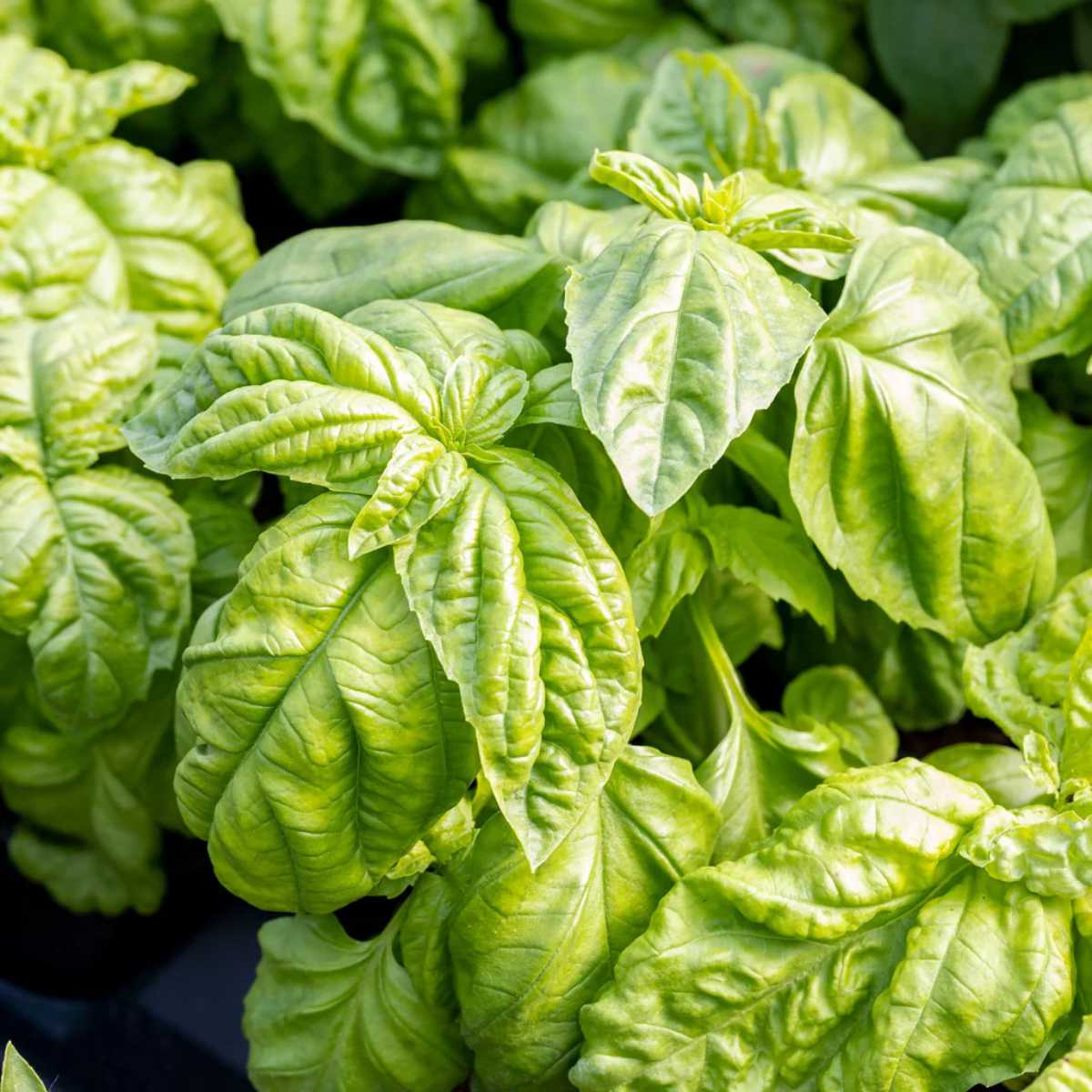
Napoletano Basil, also known as Neapolitan or Italian Large-Leaf Basil, is a cultivar of Ocimum basilicum. Commonly referred to as "Mammoth Basil" for its large leaves, it is recognized by its local name "Bolloso Napoletano" due to the blistered texture of its foliage.
Taste and Appearance
This variety has large, bright green, ruffled leaves up to four inches wide. Napoletano Basil's sweet and peppery flavor is more intense and slightly spicier than traditional sweet basil. It emits a robust, fragrant aroma, making it a favorite for culinary use.
Uses/Culinary
- Fresh Applications: Ideal for sandwiches and wraps or as a fresh addition to salads.
- Pesto: Perfect for creating a richer, more flavorful pesto than typical smaller-leaf basil varieties.
- Cooking: It retains its strong flavor during cooking, making it excellent for incorporating into sauces and stews.
Unique Characteristics
- Culinary Flexibility: Its large leaves and robust flavor make it versatile for a variety of dishes, from fresh salads to hearty cooked sauces.
- Aesthetic Appeal: Prized for its ornamental qualities in gardens, its large leaves and strong flavor profile enhance the visual and gustatory experience.
- Garden Utility: Ideal for ornamental garden planting, providing visual interest and culinary utility.
23. Opal Basil
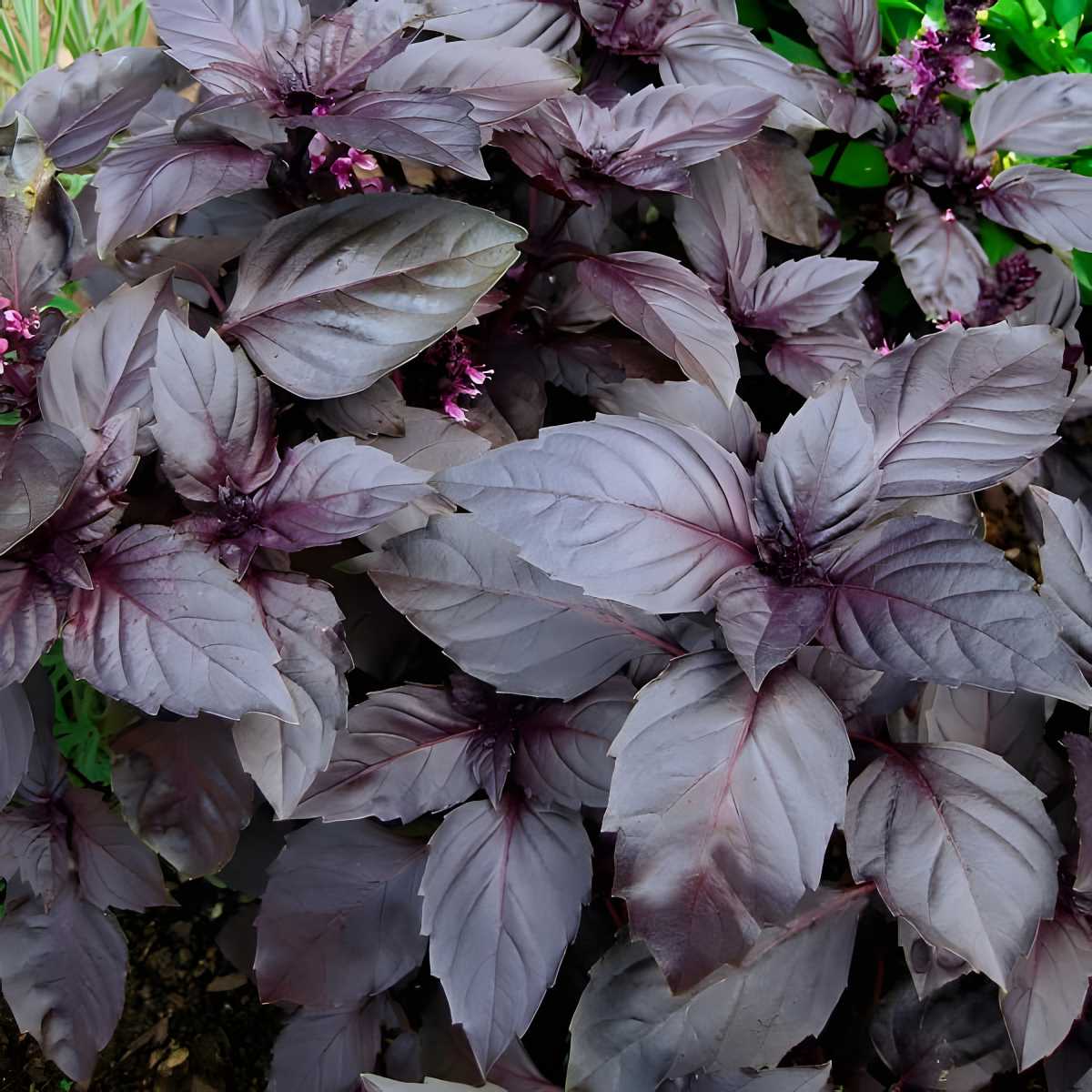
Opal Basil, or Dark Opal Basil, is a cultivar of Ocimum basilicum notable for its vibrant purple leaves. Introduced in the 1950s, it is valued for its ornamental appeal and culinary uses.
Taste and Appearance
This basil features deep purple, almost black leaves that are smooth and shiny, contrasting beautifully with its pink or light purple flowers. It offers the classic sweet basil flavor with additional peppery and anise-like undertones, delivering a stronger and more robust taste than green basil varieties.
Uses/Culinary
- Decorative Garnishes: Its vibrant purple leaves add visual appeal to salads and act as colorful garnishes.
- Flavoring: Used in pasta, vinegar, and cocktails to highlight its unique color and flavor.
- Pesto: Offers a visually stunning and tasty alternative to traditional green pesto.
Unique Characteristics
- Nutritional Powerhouse: Rich in vitamins A, C, K, magnesium, and iron, contributing to its health benefits.
- Antioxidant-Rich: The dark leaves contain high levels of anthocyanins, which are powerful antioxidants.
- Ornamental Appeal: Beyond culinary use, it enhances garden aesthetics with its striking purple foliage.
24. Persian Basil
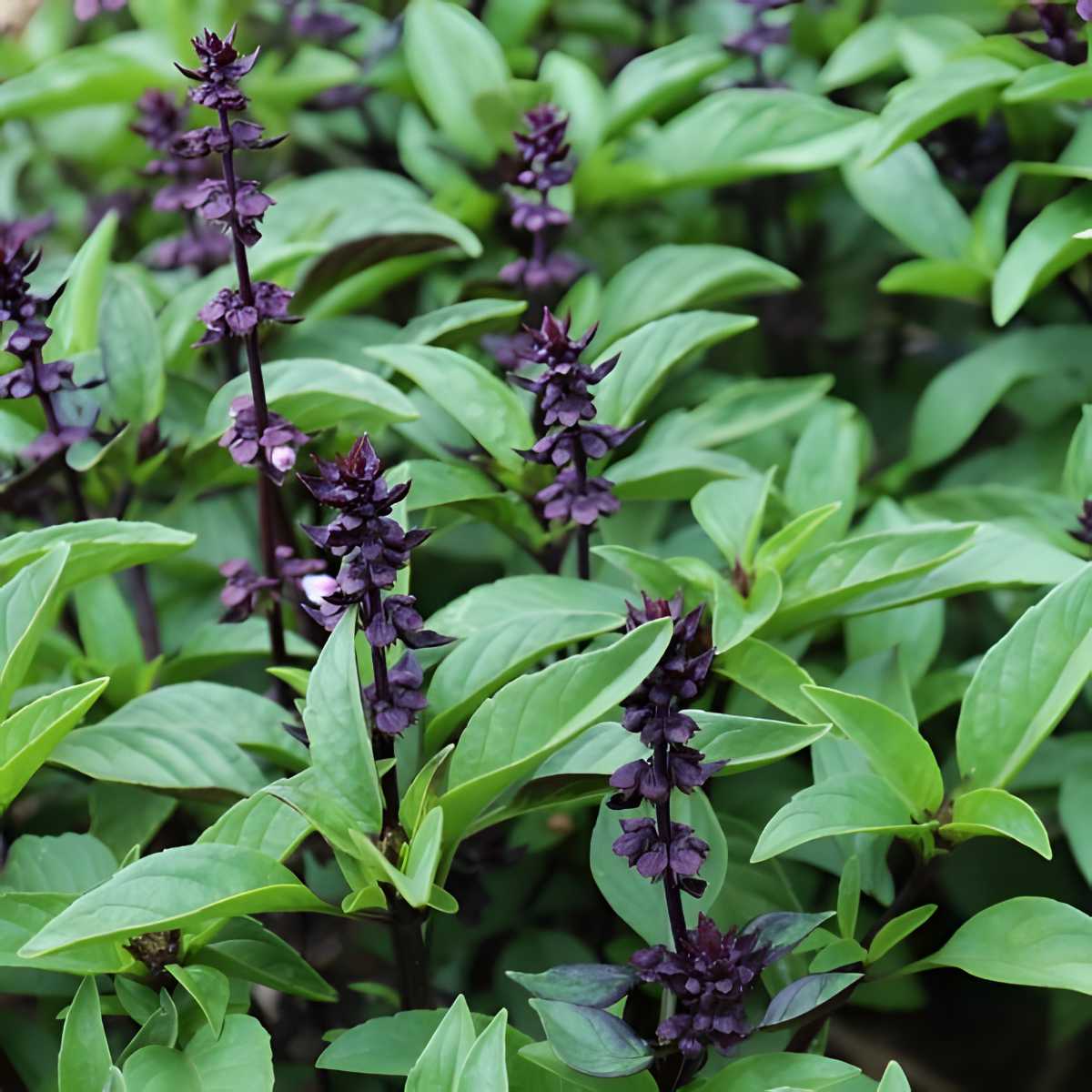
Persian Basil, also known as Licorice Basil, is a variant of Ocimum basilicum. It is celebrated for its aromatic profile that resembles the sweet, anise-like flavor of licorice, making it popular in Persian and Middle Eastern cuisines.
Taste and Appearance This basil has vibrant green leaves with occasional purple undertones and glossy foliage. It is distinguished by its sweet, licorice-like aroma, which is more pronounced than in other basil varieties, due to its high concentration of anethole, also found in anise.
Culinary Uses
- Herbal Teas: The aromatic properties of Persian Basil make it excellent for flavoring teas.
- Desserts: Its licorice flavor pairs well with fruit-based desserts.
- Savory Dishes: Adds a complex, subtly sweet flavor to stews and sauces.
Unique Characteristics
- Medicinal Properties: Traditionally used to soothe stomach ailments and reduce inflammation, thanks to its digestive and anti-inflammatory effects.
- Aromatic Uses: The potent licorice scent enhances potpourris and homemade scented products, providing a pleasant fragrance.
25. Purple Basil
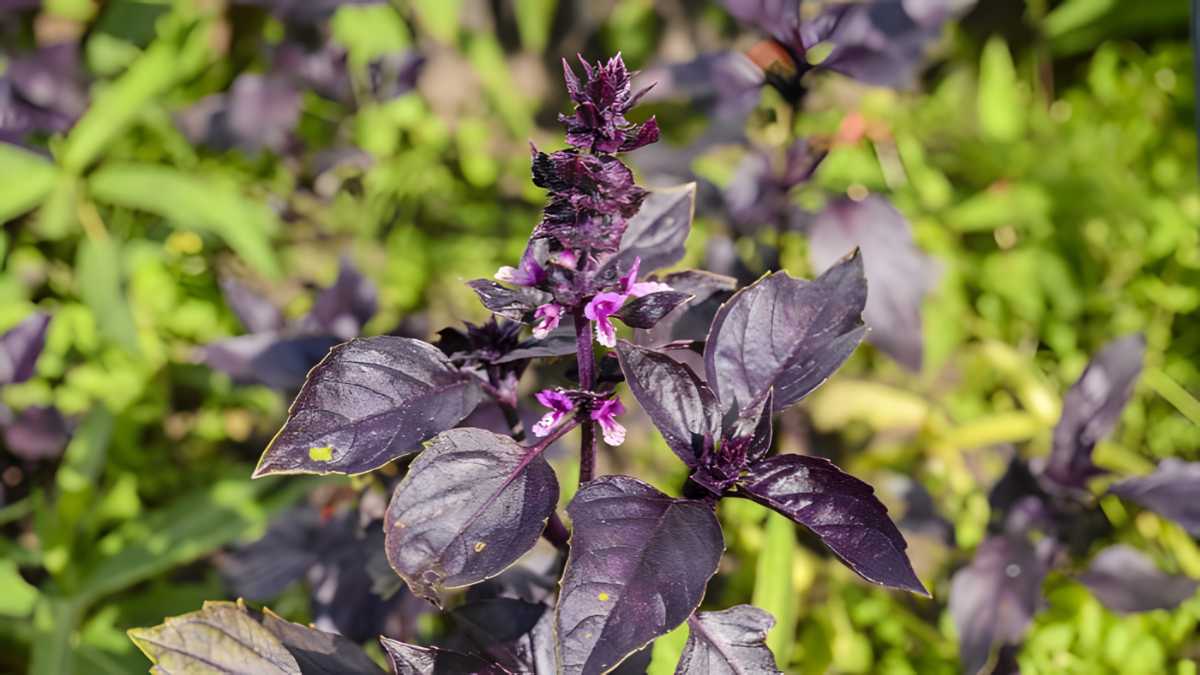
Purple Basil, or Ocimum basilicum 'Purpurescens,' is a colorful variant of common sweet basil, valued for its deep purple leaves and distinct flavor profile.
Taste and Appearance
This basil has vibrant violet leaves that can appear almost black. It maintains the size and shape of traditional sweet basil but with a richer color. It offers a milder flavor than green sweet basil, with hints of clove and anise and a slight spiciness, complemented by a subdued aroma.
Culinary Uses
- Garnishes: The vivid color provides decorative flair to dishes.
- Culinary Dishes: Adds a unique visual and flavor twist to salads, pastas, and pizzas.
- Infusions: Excellent for infusing vinegar and oils, enhancing them with its subtle flavor and striking color.
Unique Characteristics
- Ornamental Value: Popular in gardens and containers for its aesthetic appeal.
- Health Benefits: Like other basil varieties, it offers anti-inflammatory and antibacterial properties and is enriched with vitamins and antioxidants.
26. Purple Ruffles Basil
Purple Ruffles Basil, a cultivar of Ocimum basilicum, is known for its visually striking purple, ruffled leaves and culinary versatility, making it a unique alternative to traditional basil varieties.
Taste and Appearance This basil features deeply ruffled, dark purple leaves that sometimes appear almost black, growing up to 18 inches tall with complementary purple flowers. It offers a complex flavor with notes of anise and a peppery finish and a more intense aroma compared to standard green basil.
Culinary Uses
- Garnishes: Its vibrant leaves provide visual and flavor enhancement to dishes.
- Flavoring: Commonly used in salads, sauces, and beverages to showcase its unique color and taste.
- Infusions: Ideal for making flavored vinegar and oils that highlight its aromatic properties.
Unique Characteristics
- Ornamental Value: It is valued not only for its flavor but also as a decorative plant in gardens and containers.
- Health Benefits: Contains vitamins A and C, calcium, iron, and essential oils, offering anti-inflammatory and antibacterial benefits.
27. Red Rubin Basil
Red Rubin Basil, a cultivar of Ocimum basilicum, is recognized for its vibrant dark purple to reddish leaves. This variety is popular for both its ornamental appeal and culinary flexibility.
Taste and Appearance
Red Rubin Basil has deep purple to burgundy leaves that are slightly larger and flatter than other purple basils like 'Dark Opal'. It typically reaches 12-18 inches in height and blooms with pink flowers.
The flavor is strong and sweet with peppery undertones, offering a spicier twist compared to traditional green basil.
Culinary Uses
- Garnishes: The intense color enhances the visual appeal of dishes.
- Culinary Dishes: Frequently used in salads, infused oils, and vinegar to showcase its vibrant color.
- Pesto: Provides a colorful and flavorful variation to traditional pesto.
Unique Characteristics
- Ornamental Value: The striking purple foliage and pink flowers make Red Rubin Basil a decorative favorite.
- Health Benefits: It is rich in vitamins A, C, and K, minerals like magnesium, iron, potassium, and calcium, and contains essential oils such as eugenol and rosmarinic acid, which have anti-inflammatory and antibacterial properties.
28. Spice Basil
Spice Basil is a hybrid of Ocimum basilicum (common basil) and Ocimum americanum (American basil). It is known for its unique aroma and flavor, which blend the characteristics of its parent species.
It should not be confused with traditional holy basil (Ocimum tenuiflorum), despite similar names in some markets.
Taste and Appearance This basil has vibrant green leaves that may exhibit lighter, more delicate textures similar to American basil.
It combines the robust growth of common basil with the hardiness of American basil varieties. Spice Basil's flavor is more intense than common basil, featuring spicy undertones that add complexity.
Culinary Uses
- Cooking: Suitable for traditional basil applications like pestos, sauces, and salads, its robust flavor also makes it ideal for simmering in soups and stews.
- Infusions: Effective in infused oils and vinegar, capturing its distinct spicy-sweet flavor.
- Herbal Teas: The leaves are used to make herbal teas that benefit from its aromatic and spicy properties.
Unique Characteristics
- Hybrid Vigor: Exhibits greater resistance to pests and diseases, making it a robust choice for gardening.Glob
- Aesthetic Appeal: Adds visual interest to gardens with its lush green foliage, enhancing both herb gardens and container plantings.
29. Spicy Bush Globe Basil
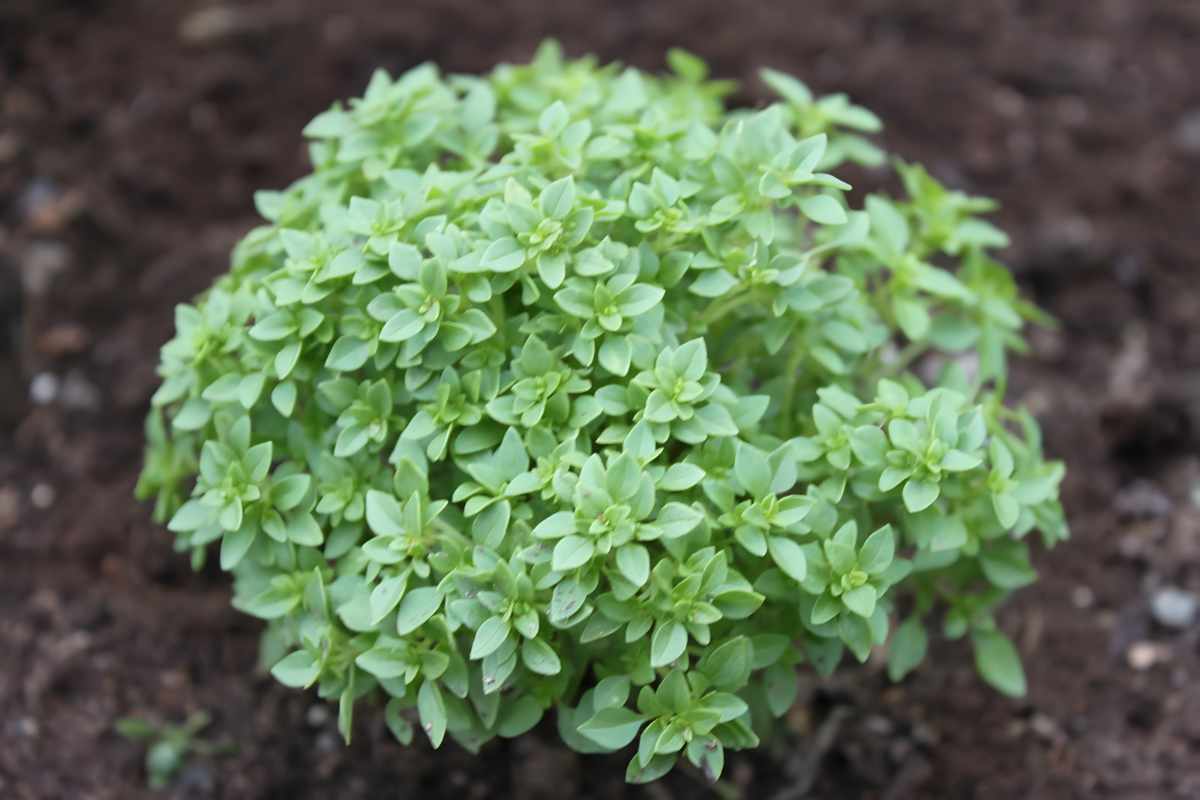
Spicy Bush Basil, a variety of Ocimum basilicum, is distinguished by its compact growth and spicy flavor. It is ideal for gardeners with limited space and culinary enthusiasts who enjoy a peppery twist in their herbs.
Taste and Appearance This basil variety features small, densely packed leaves that contribute to its bushy stature, suitable for container gardening. It delivers a sharp, spicy flavor that surpasses the mildness of common sweet basil, with pronounced peppery notes.
Culinary Uses
- Cooking: Effective in dishes requiring robust flavors, especially spicy recipes where it can stand out.
- Infusions: Ideal for spicy basil-flavored oils and vinegars.
- Garnishes: Its compact leaves make attractive, flavorful additions to various dishes.
Unique Characteristics
- Space Efficiency: Perfect for small gardens or urban balconies.
- Flavor Profile: Offers a distinct, spicy taste that enhances culinary creations and adds variety to herb gardens.
30. Sweet Basil
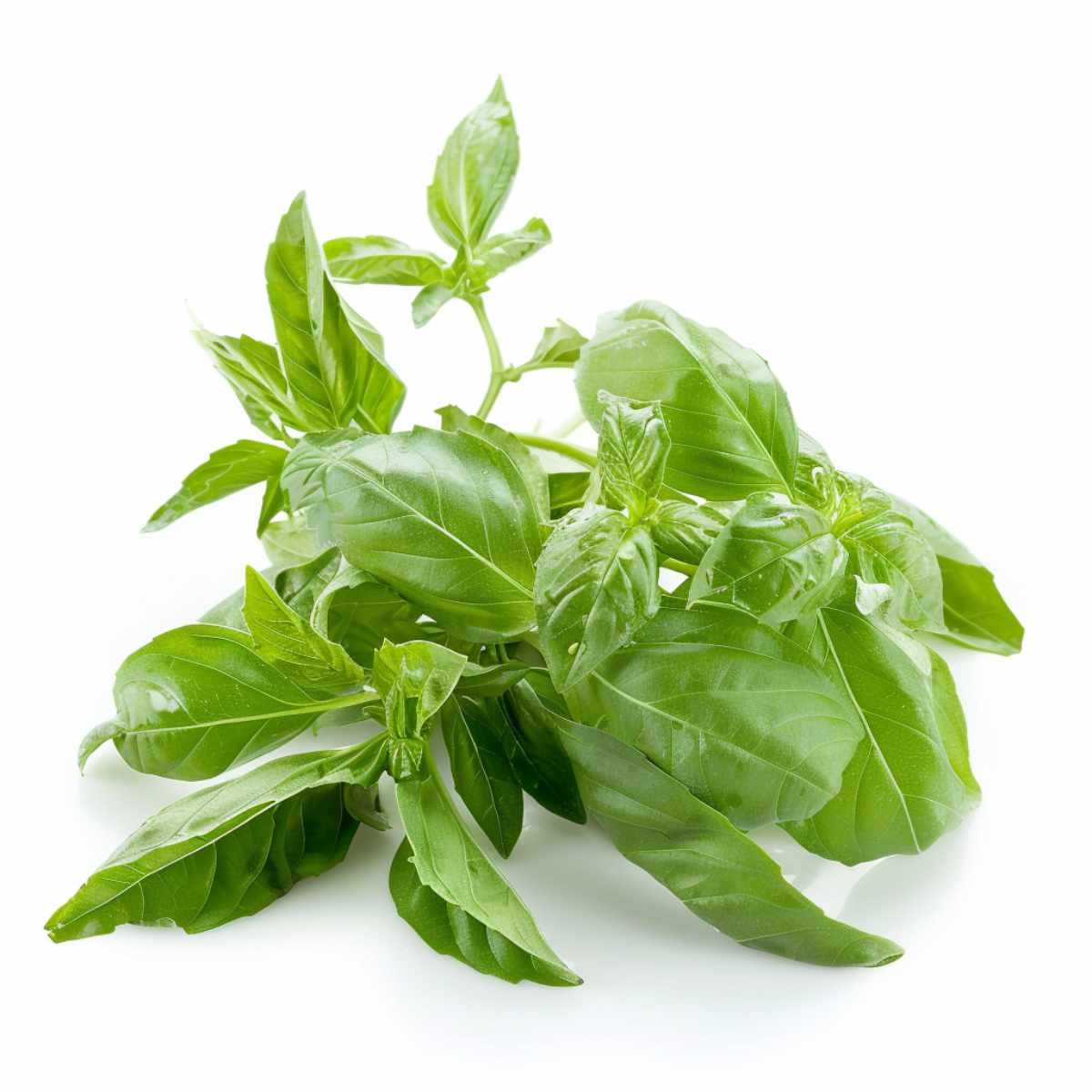
Sweet Basil, also known as Genovese Basil, belongs to the mint family, Lamiaceae, and is extensively used in Mediterranean and Southeast Asian cuisines. This herb is celebrated for its aromatic leaves which are a staple in various dishes worldwide.
Taste and Appearance
Sweet Basil grows between 30 to 150 cm tall, featuring glossy, bright green, ovate leaves that are smooth or slightly toothed. The plant emits a strong, pungent aroma with notes of clove, attributed to its high eugenol content, and has a vibrant, peppery flavor. It also produces small, white flowers.
Culinary Uses
- Italian Cuisine: Key ingredient in pesto, used in Caprese salad, and commonly added to pizzas.
- Southeast Asian Cuisine: Enhances curries, stir-fries, and noodle dishes with its freshness and aroma.
- Infusions: Flavors creams, soups, and desserts such as ice cream and chocolate truffles.
Unique Characteristics
- Nutritional Value: Rich in vitamins A, K, and C, and minerals like magnesium, iron, potassium, and calcium.
- Medicinal Uses: Used traditionally to treat digestion issues and inflammation, and known for its antibacterial, anti-inflammatory, and antioxidant properties.
- Insect Repellant: The essential oil is effective in repelling insects, making it valuable in organic pest control.
31. Thai Sweet Basil
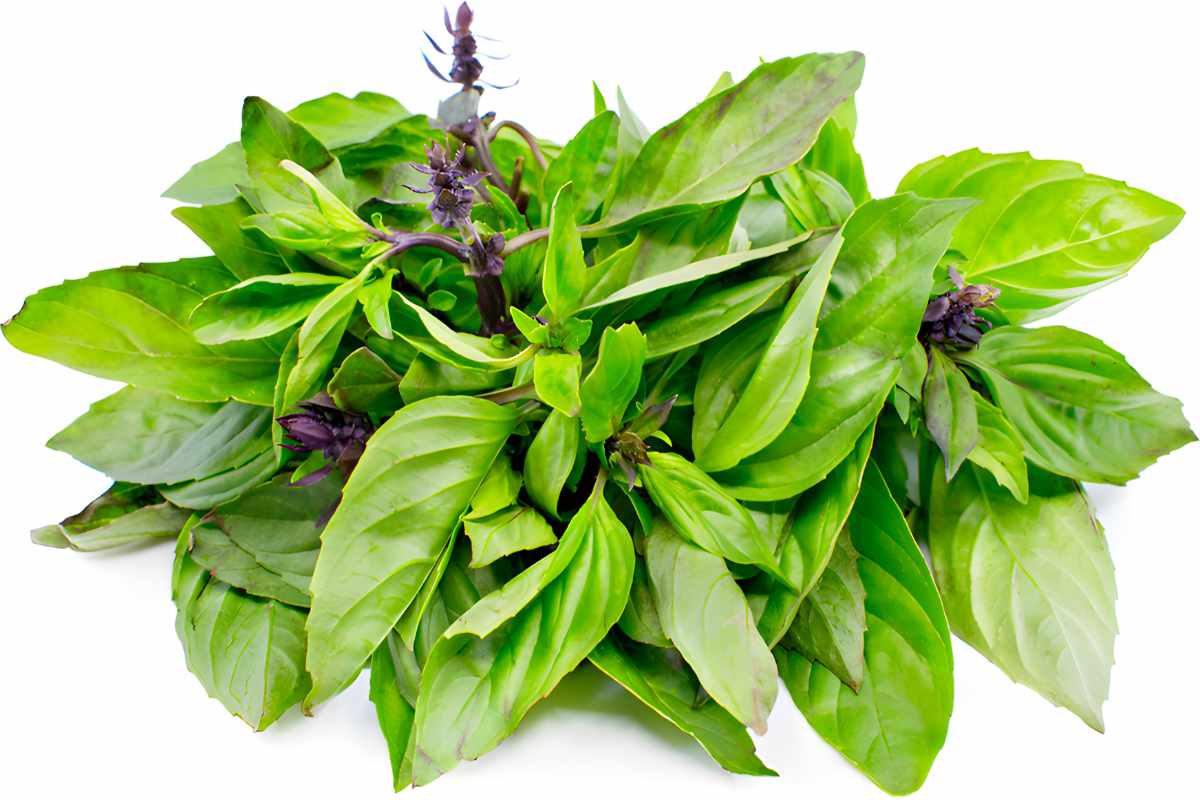
Thai Basil, known scientifically as Ocimum basilicum var. thyrsiflora, is integral to Thai, Vietnamese, and Laotian cuisines. It is prized for its ability to withstand high cooking temperatures, making it essential in many flavorful Asian dishes.
Taste and Appearance
Thai Sweet Basil is characterized by its narrow leaves, purple stems, and pink-purple flowers. It typically grows in a compact form up to 45 centimeters tall.
The flavor is distinctly spicy and anise-like, largely due to methyl chavicol (estragole), which remains stable under high cooking temperatures, unlike the flavors of traditional sweet basil. This makes it especially valuable in heated dishes.
Culinary Uses
- Southeast Asian Cuisine: Crucial in dishes like Thai curries, Vietnamese pho, and Laotian larb, adding a distinct spicy and anise-like flavor.
- Cooking: Its flavor improves with cooking, making it ideal for heated dishes. It is typically added at the end of cooking to preserve its aroma and taste.
- Herbal Teas: The leaves are also used to brew tea with a subtle licorice flavor.
Unique Characteristics
- Medicinal Properties: Known for its stress-relieving effects and used traditionally to treat stomachaches and inflammation.
- Insect Repellent: Serves as a natural insect repellent, enhancing its utility in gardens.




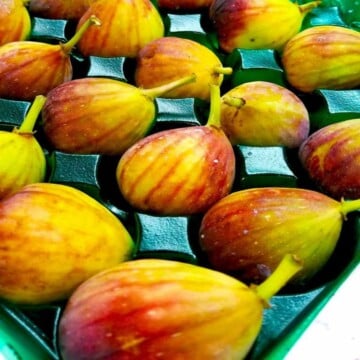
Leave a Reply